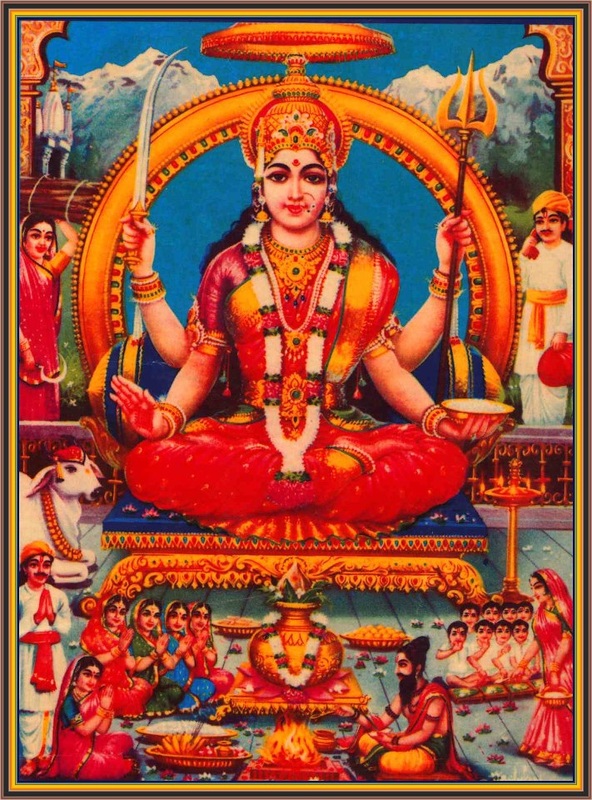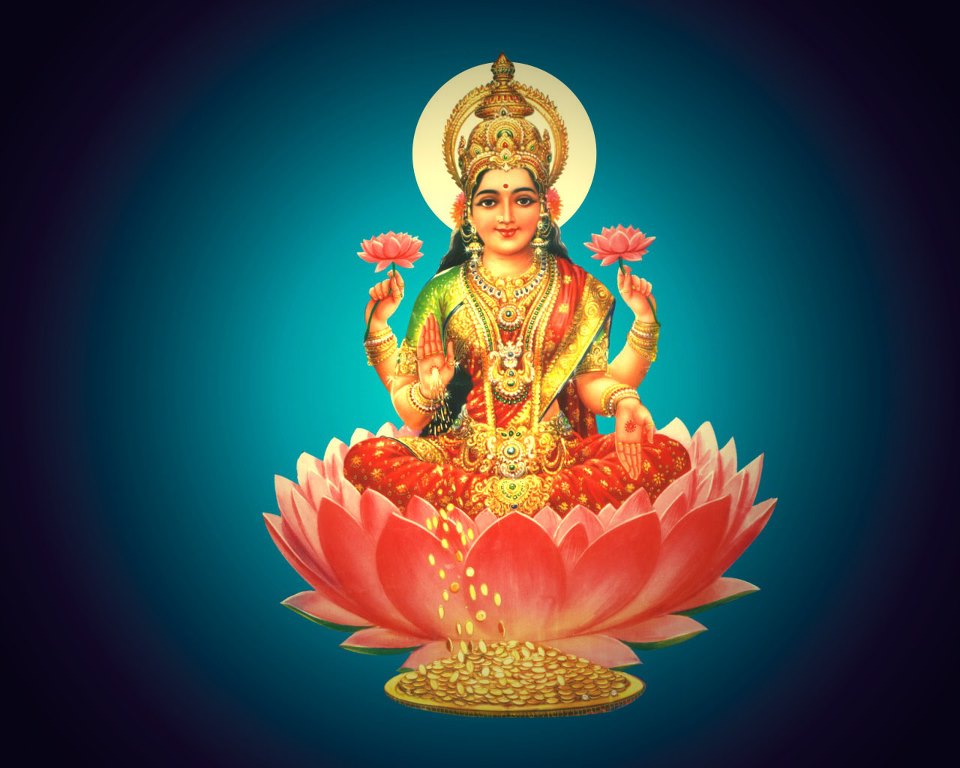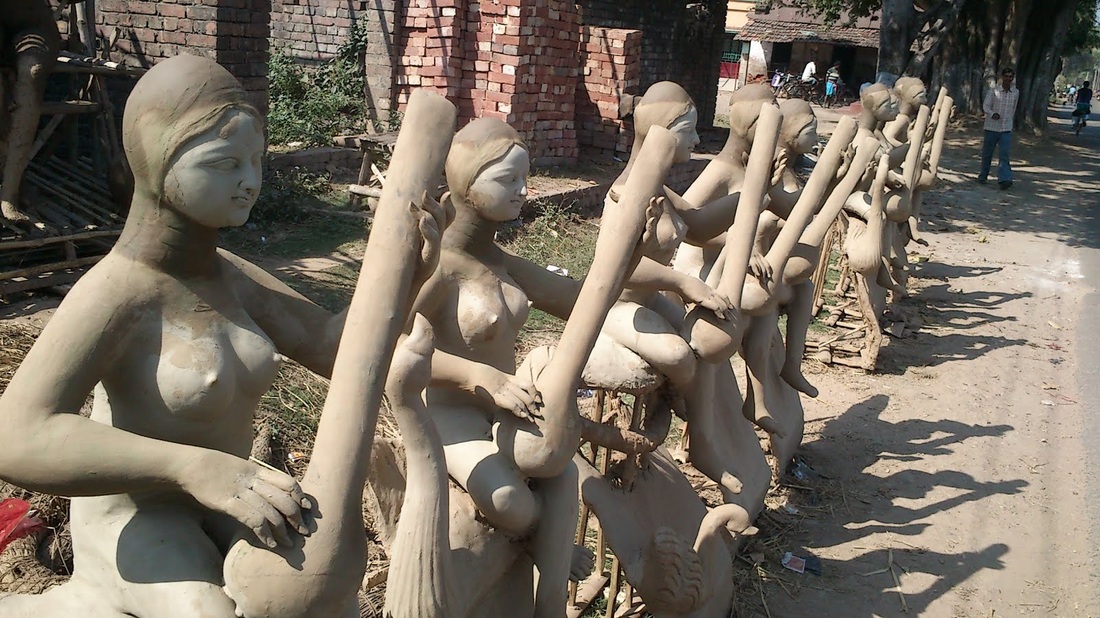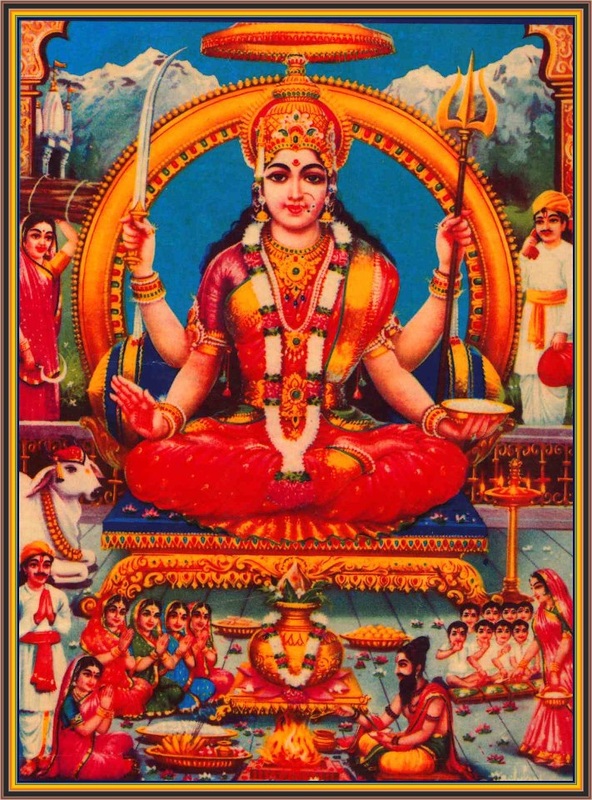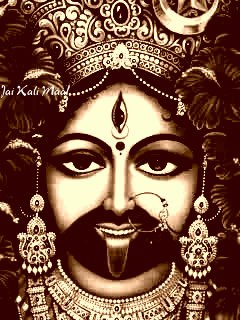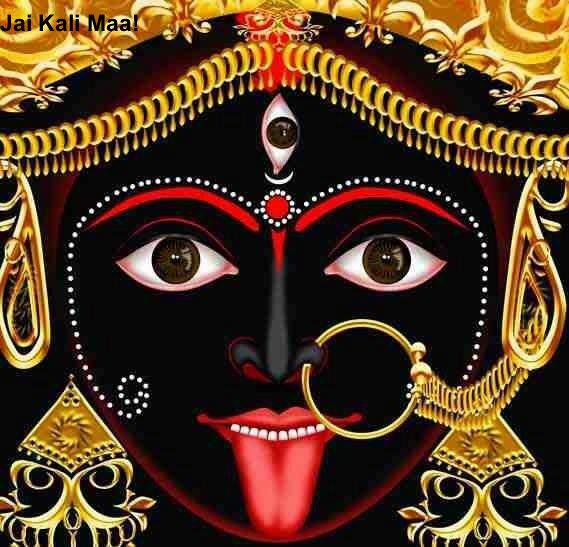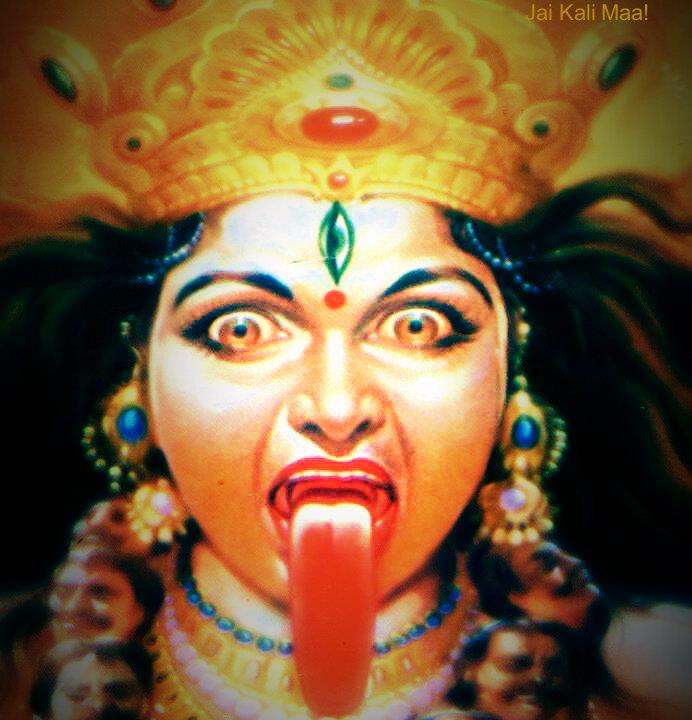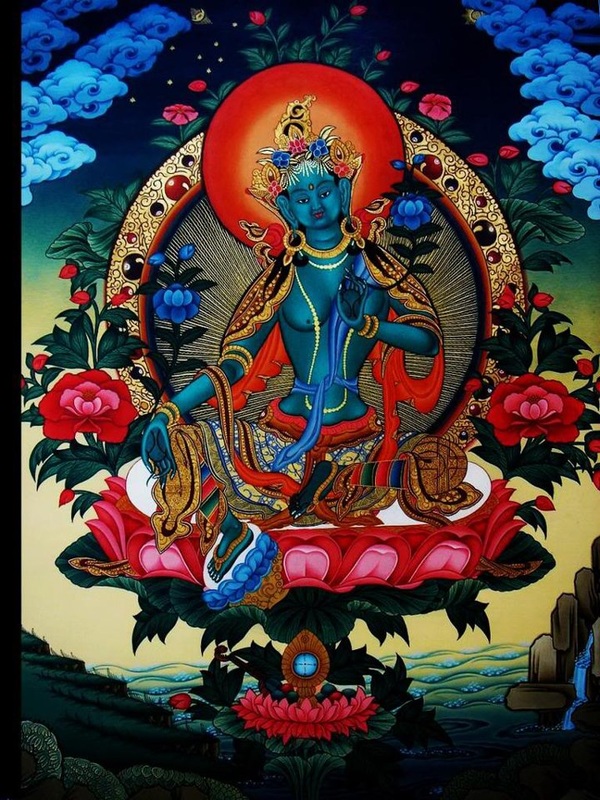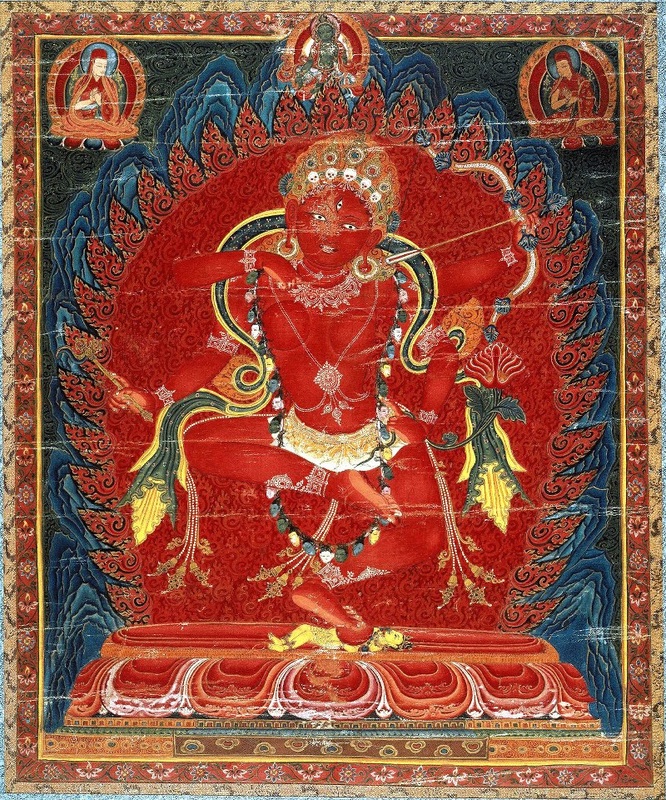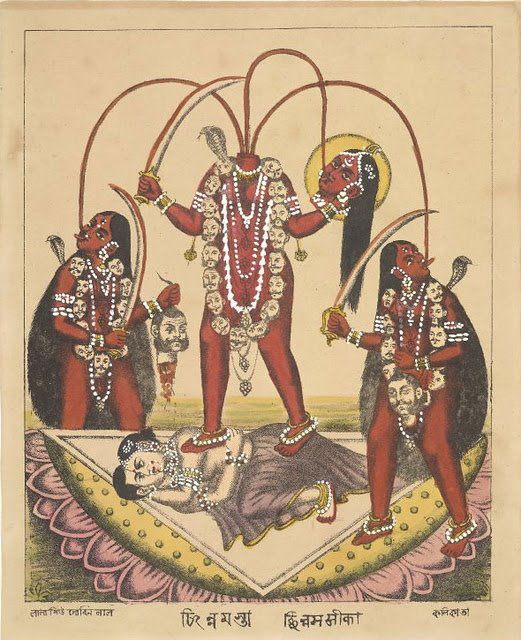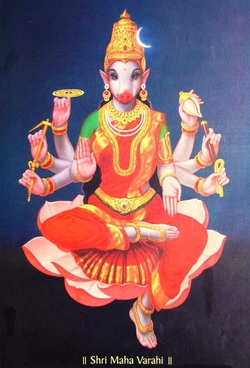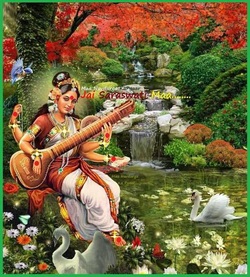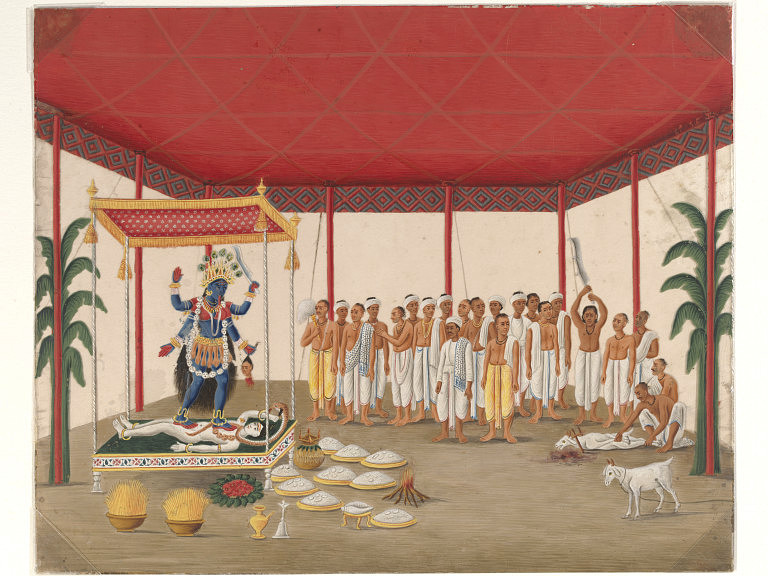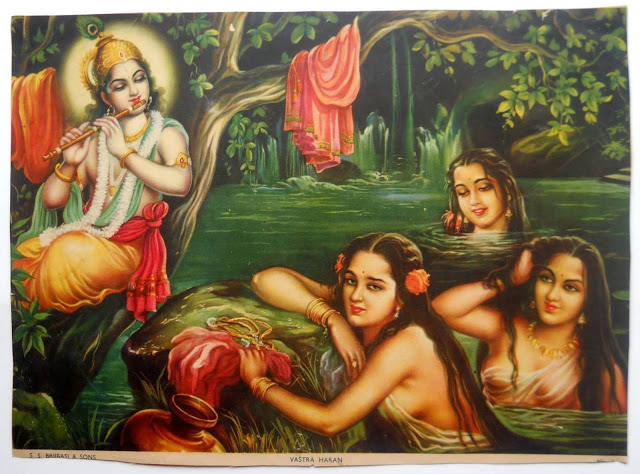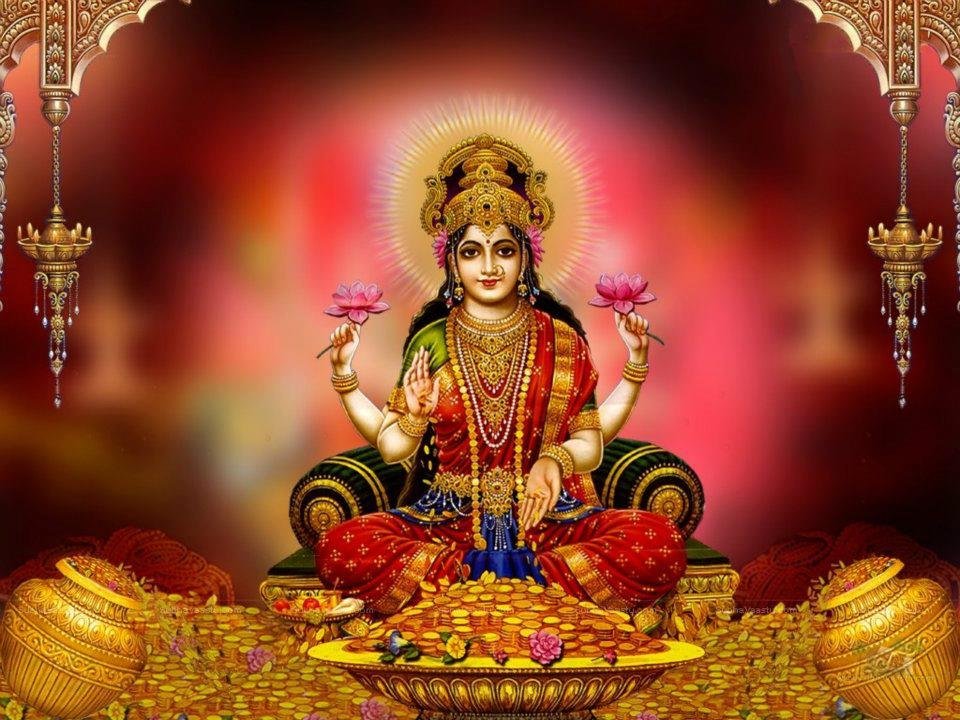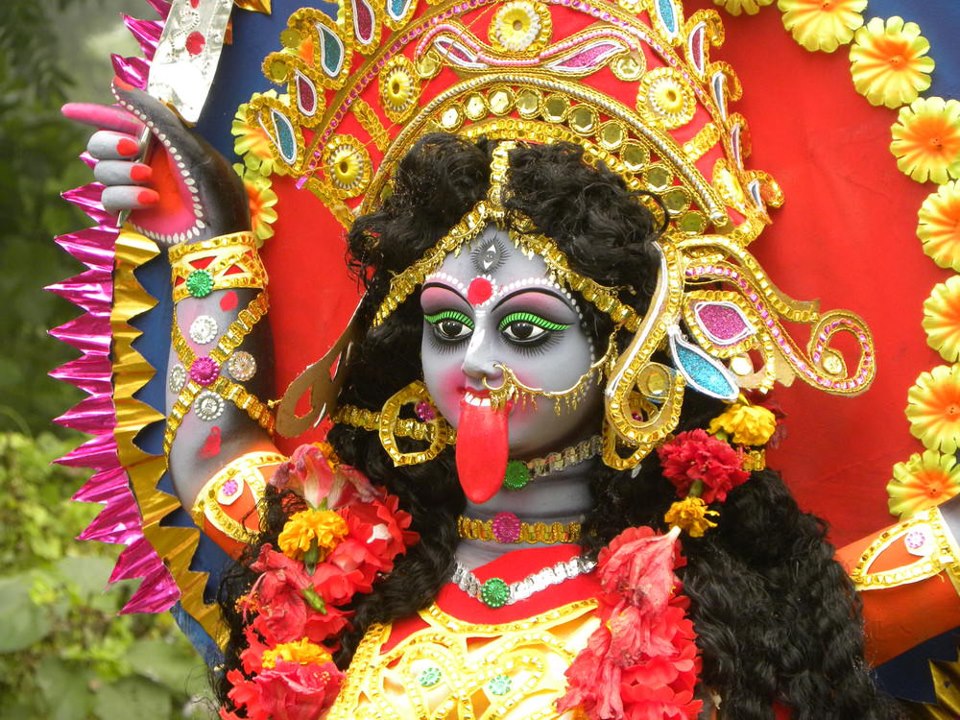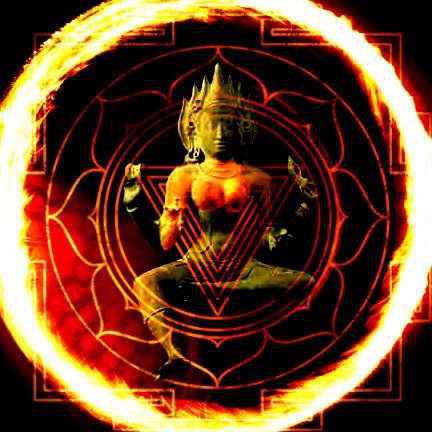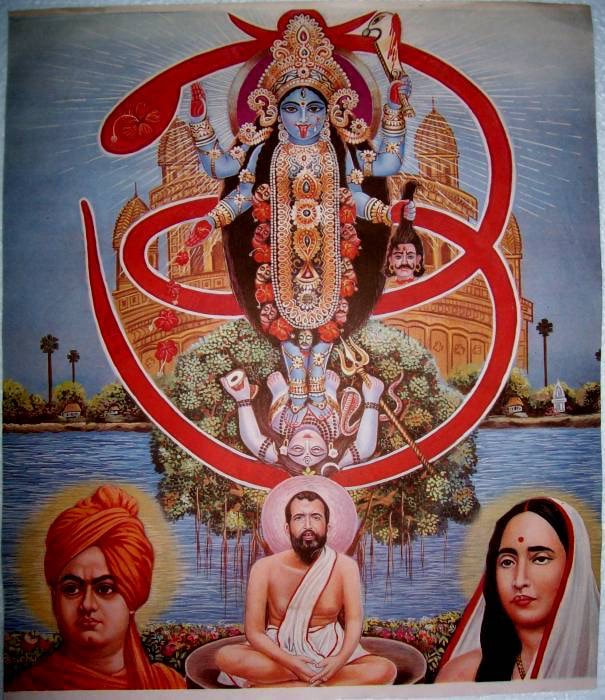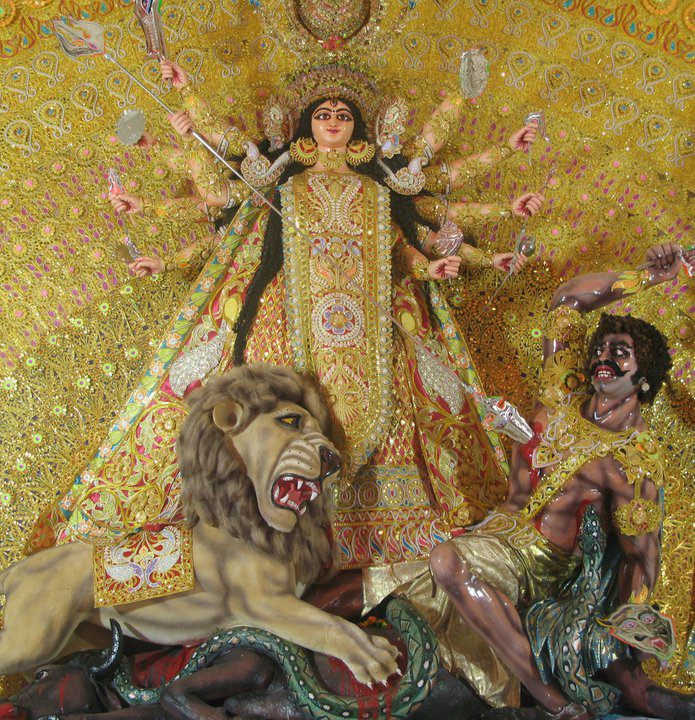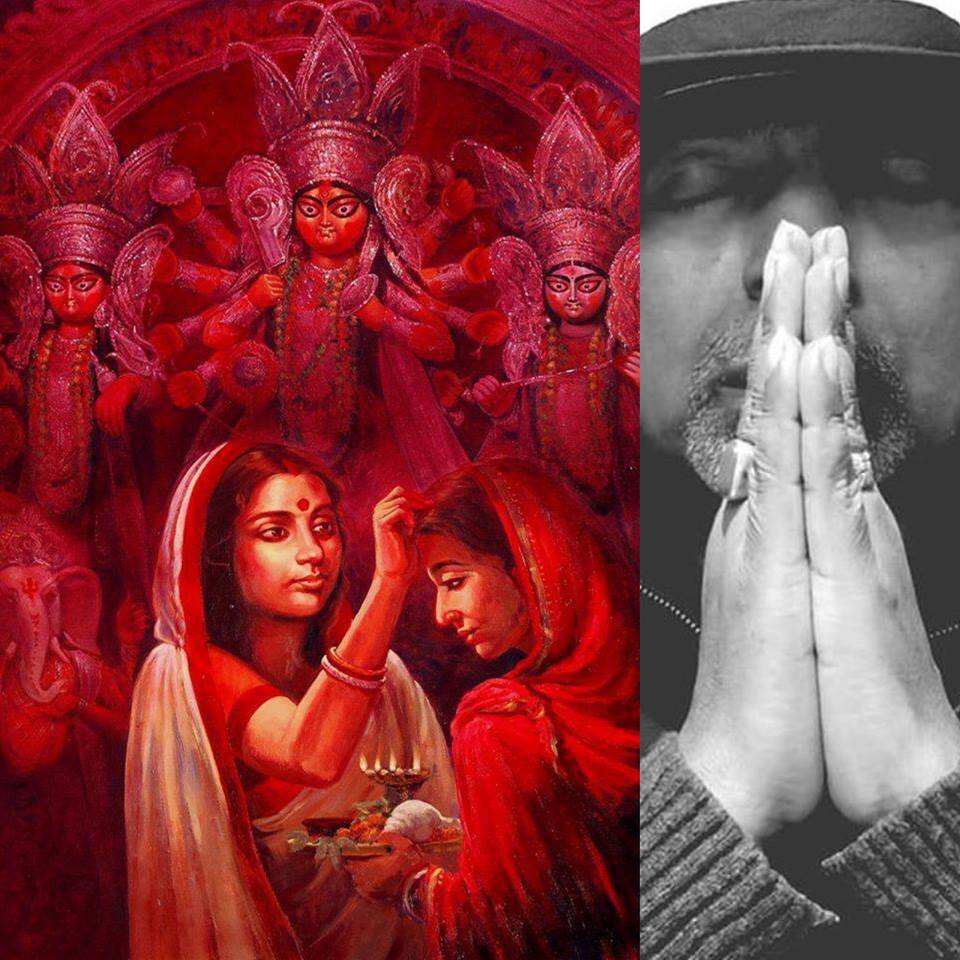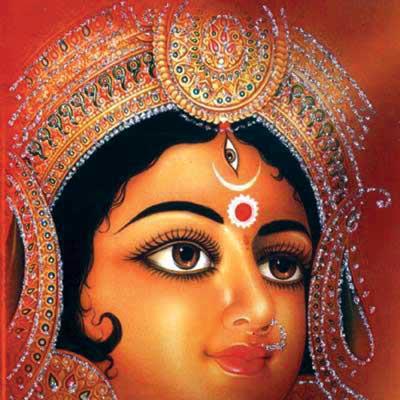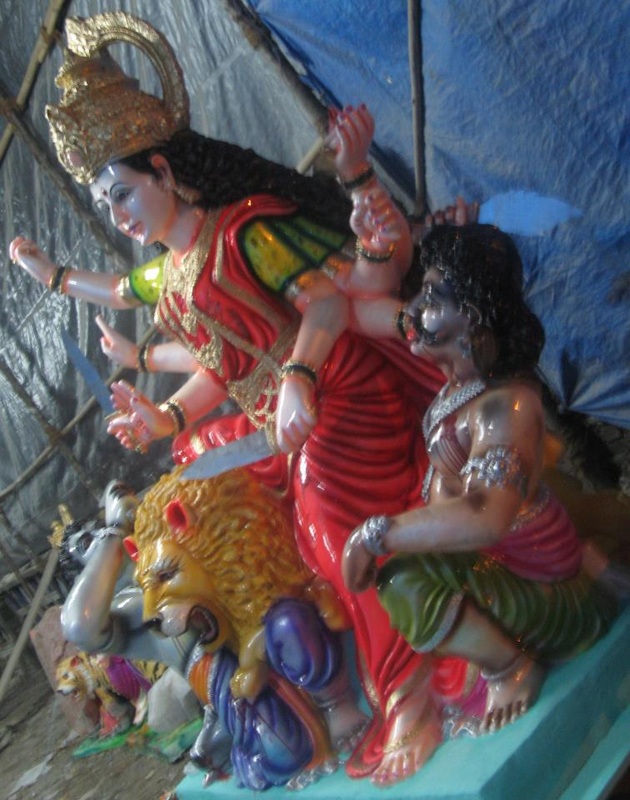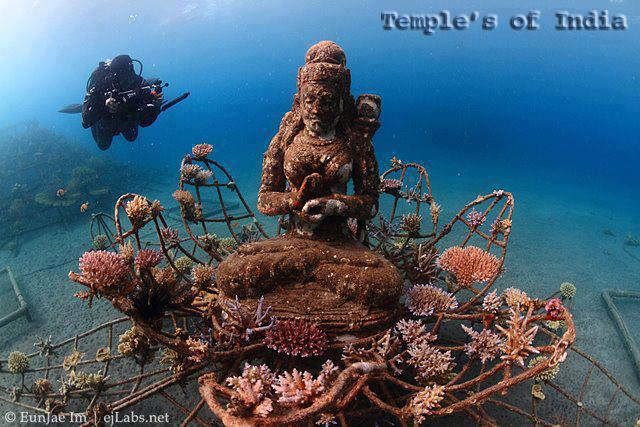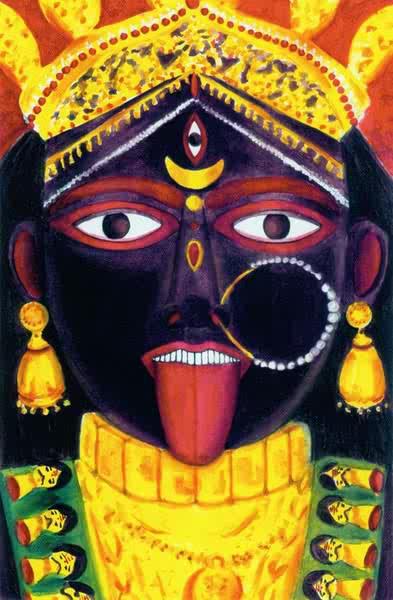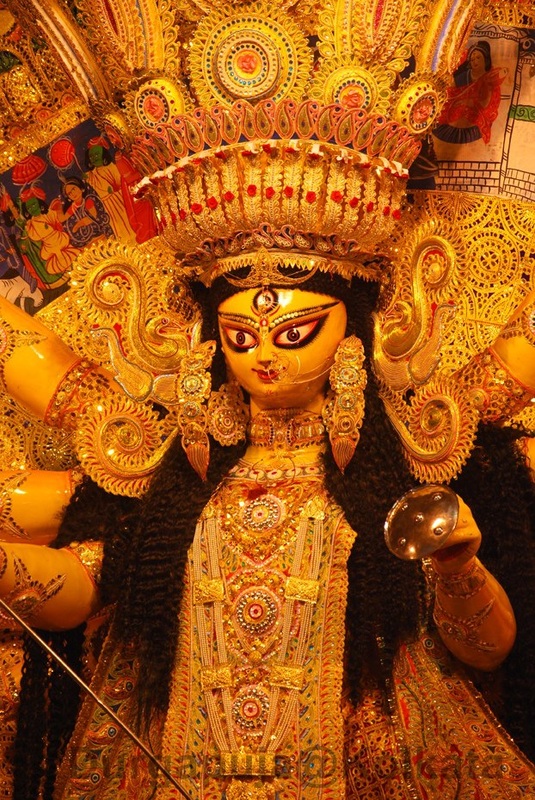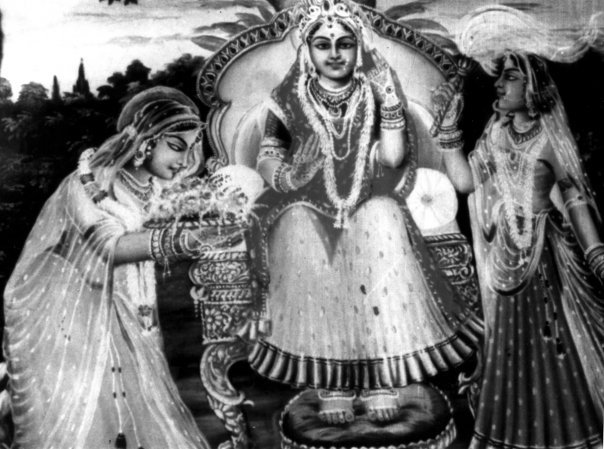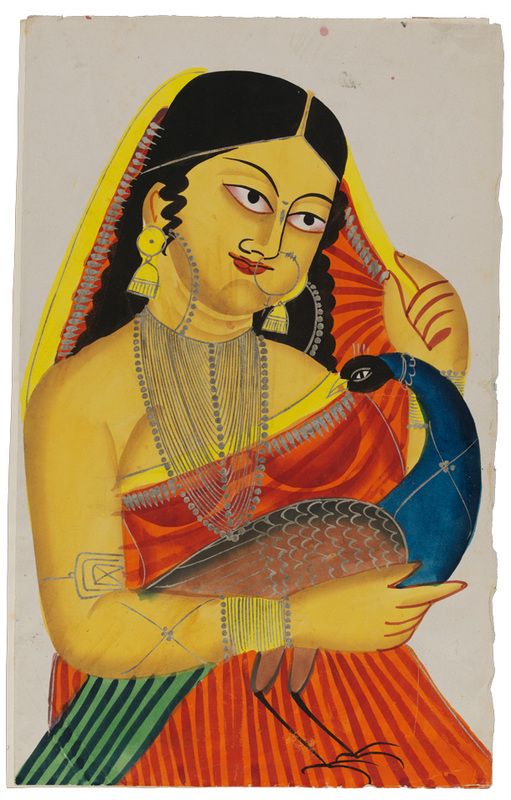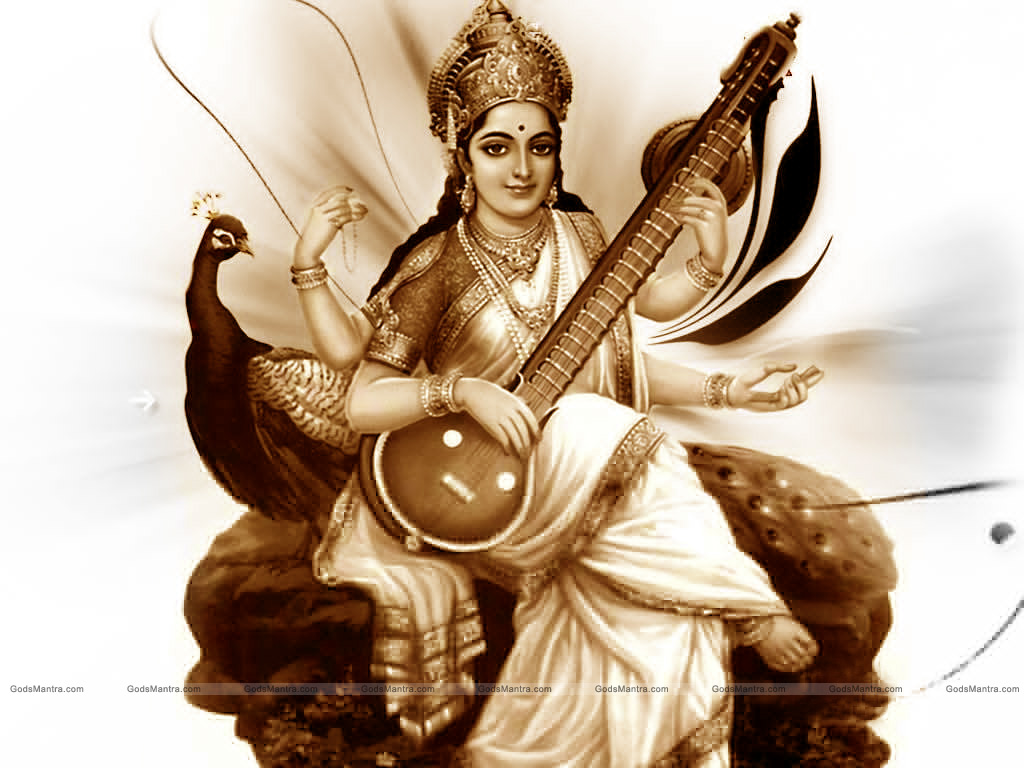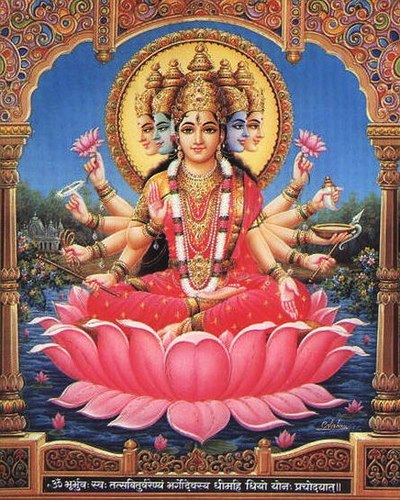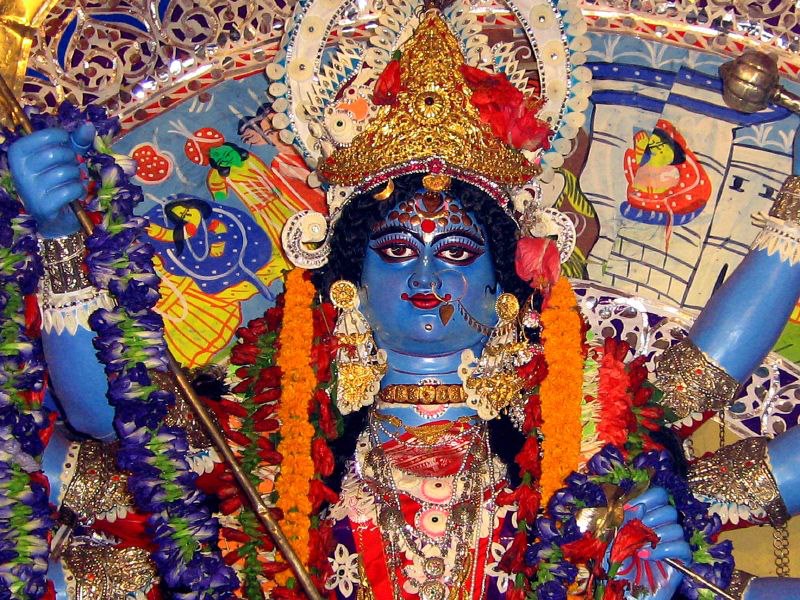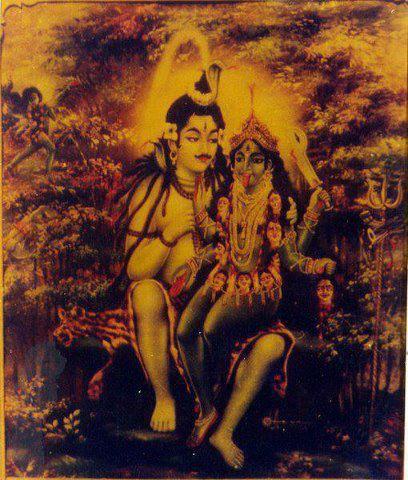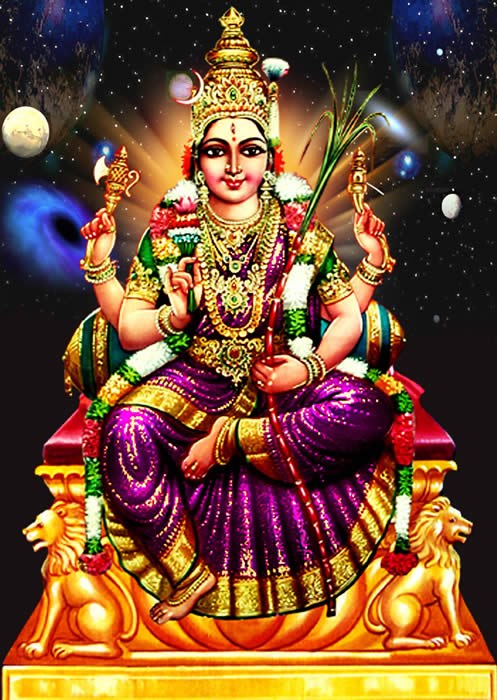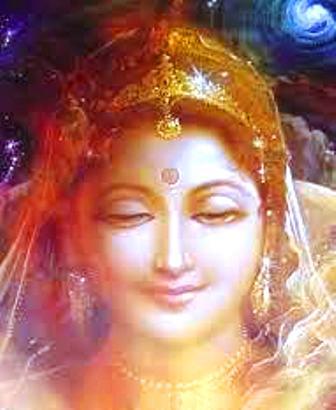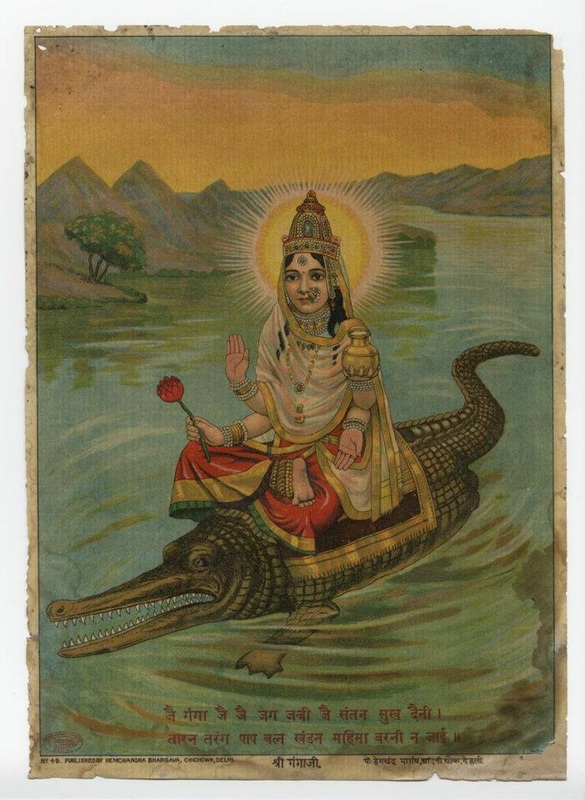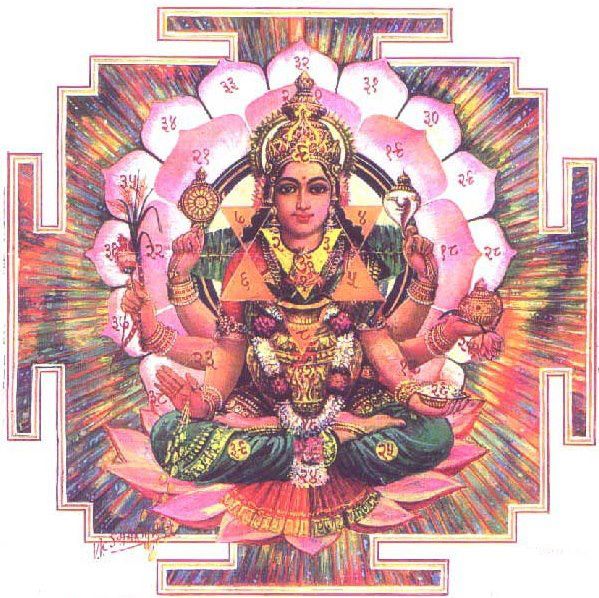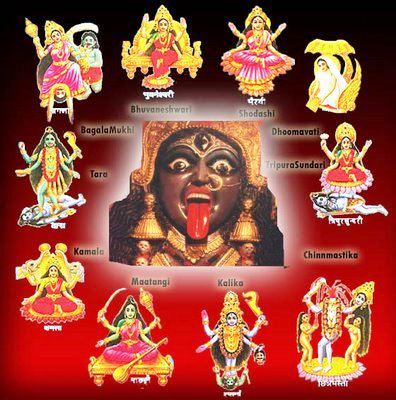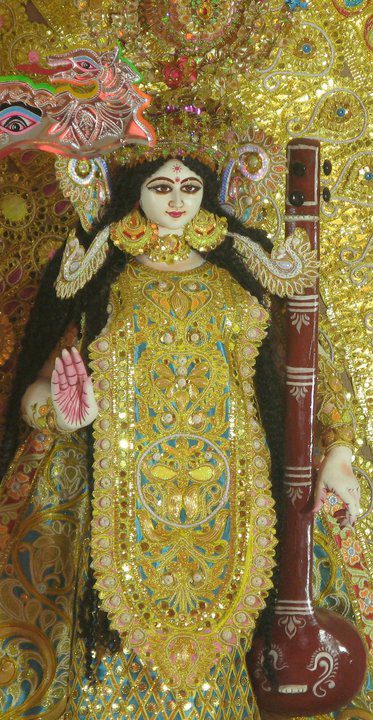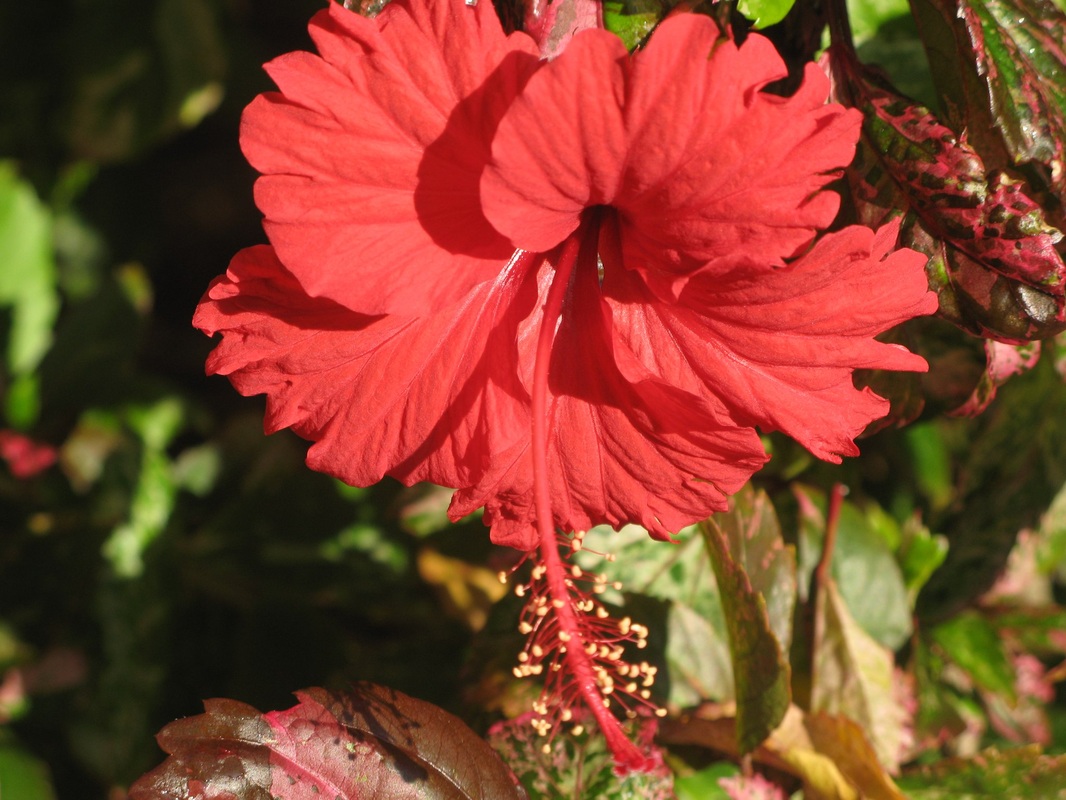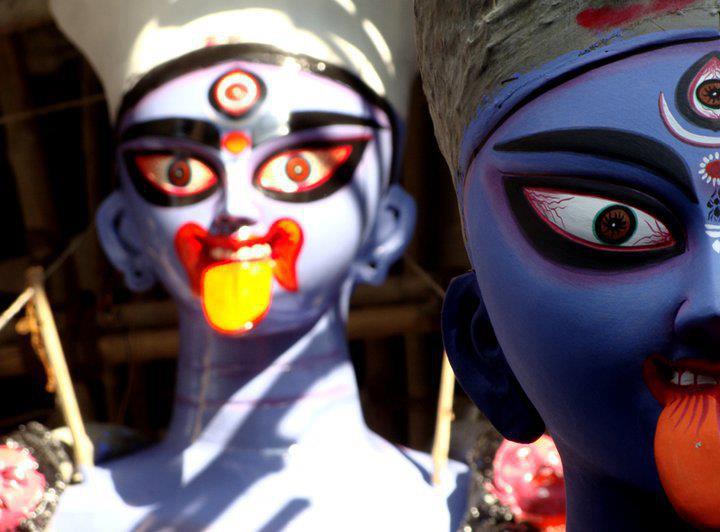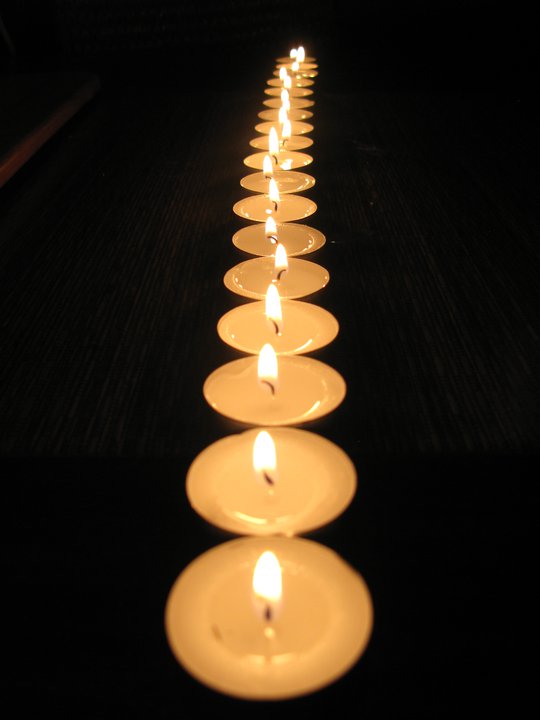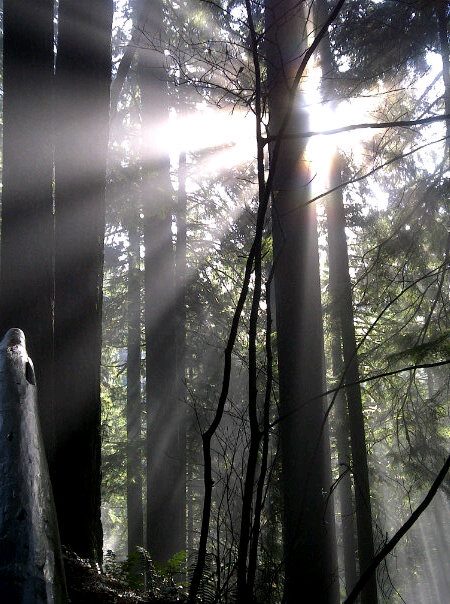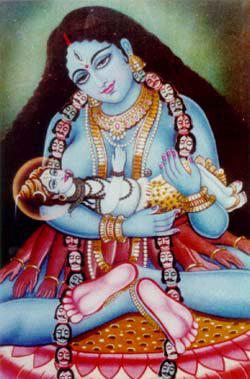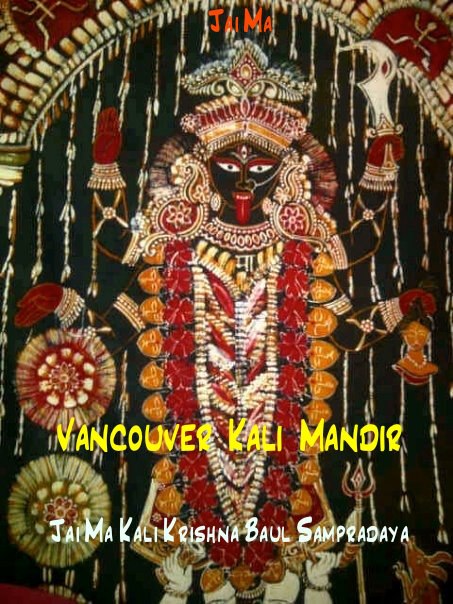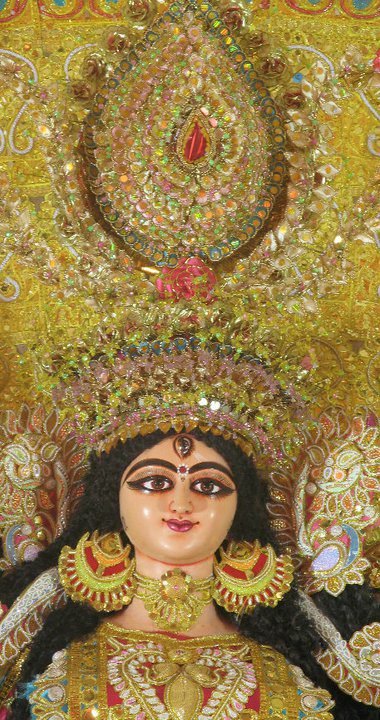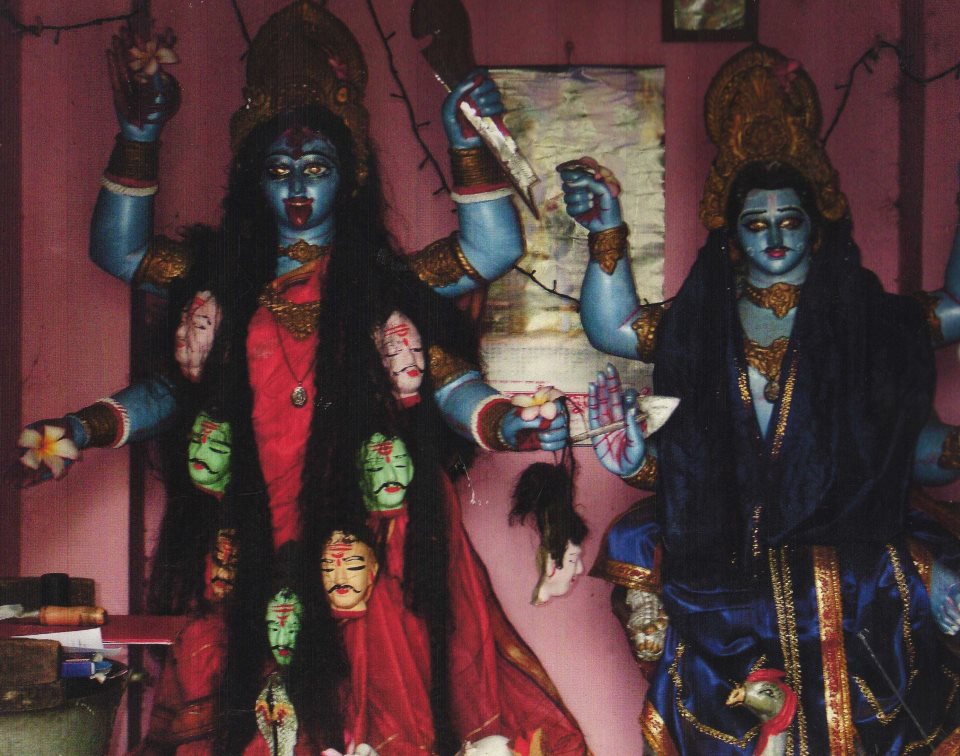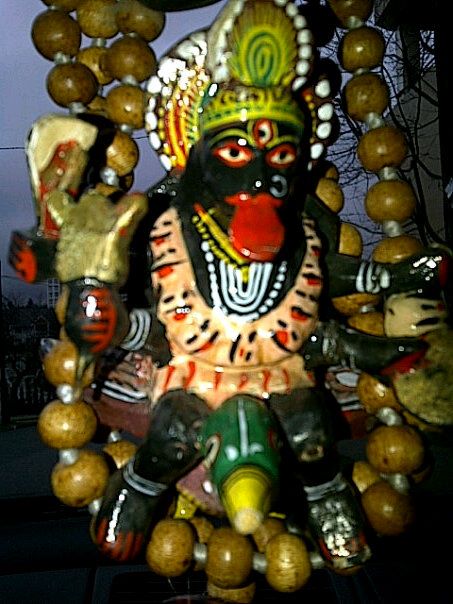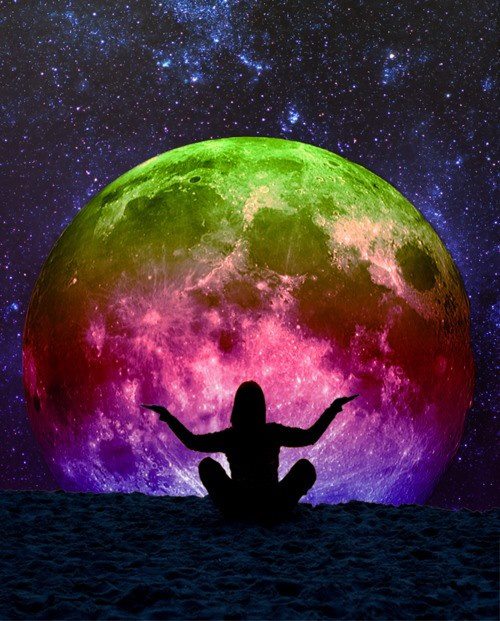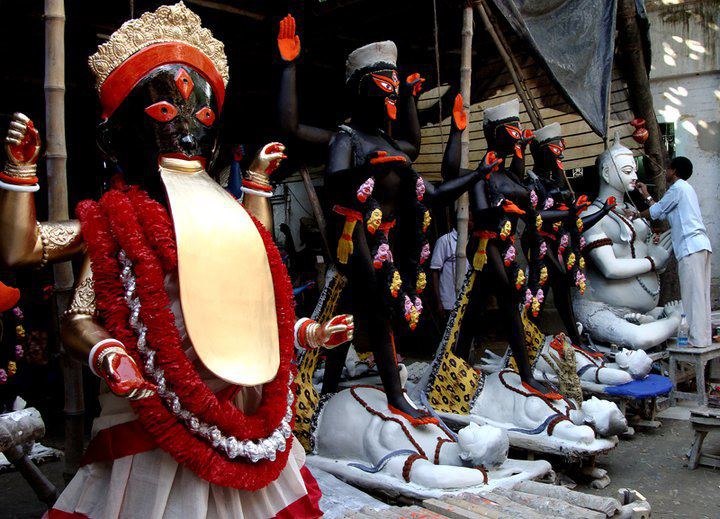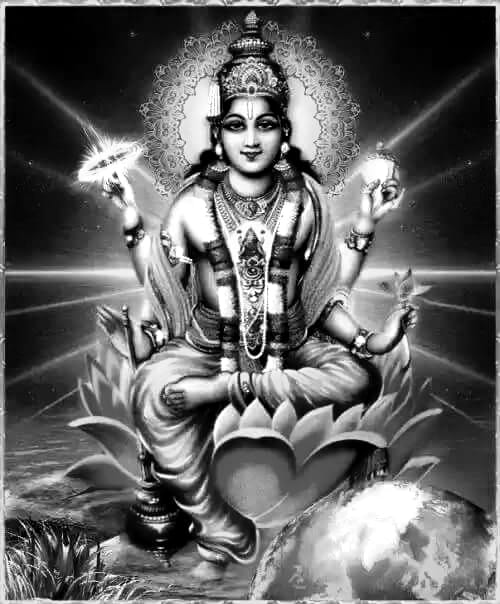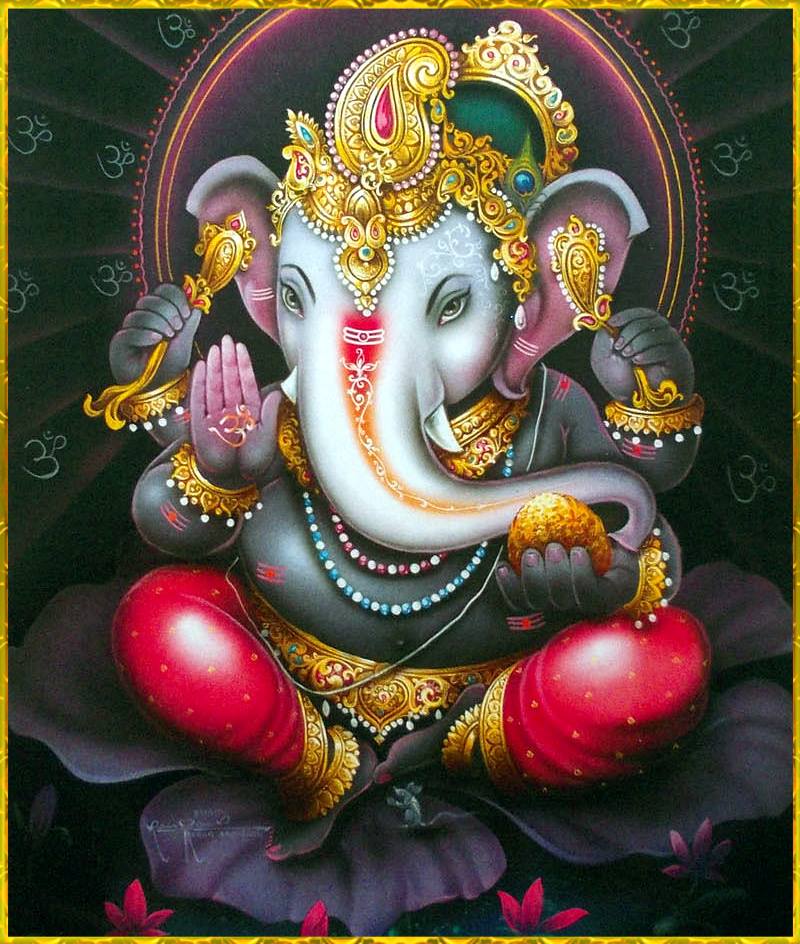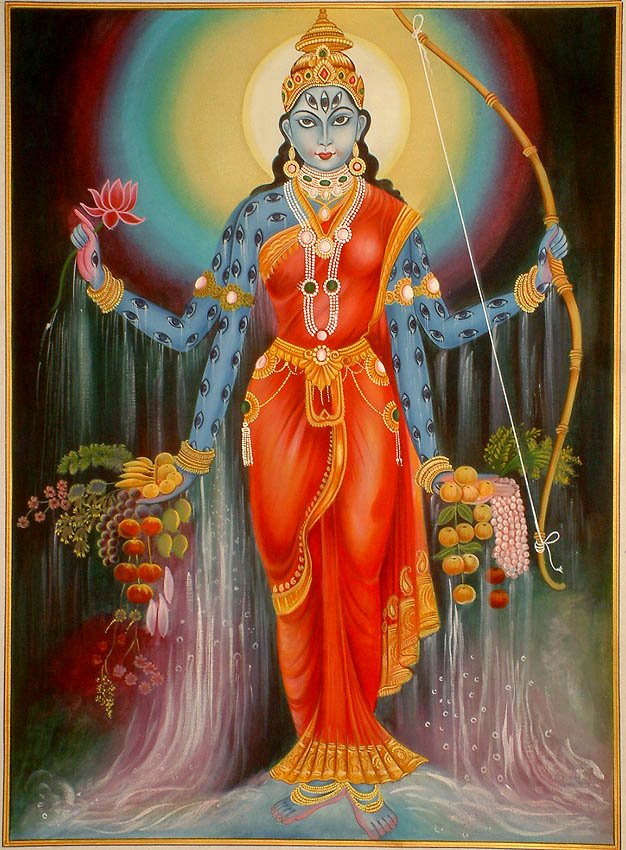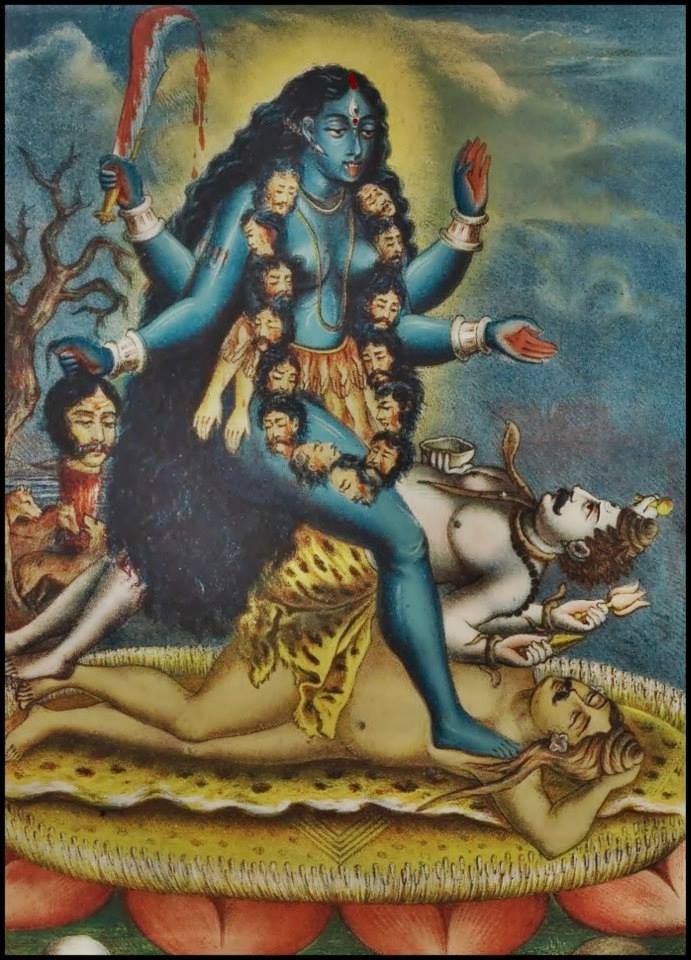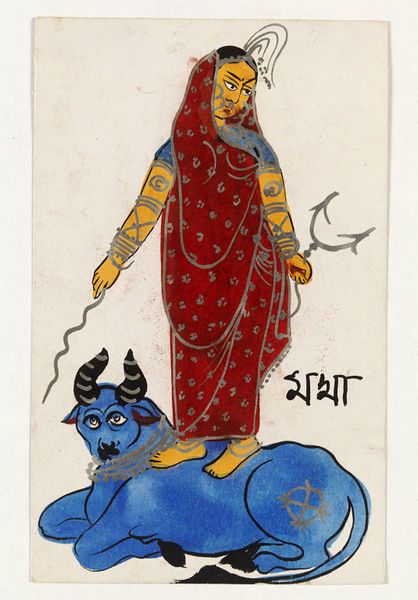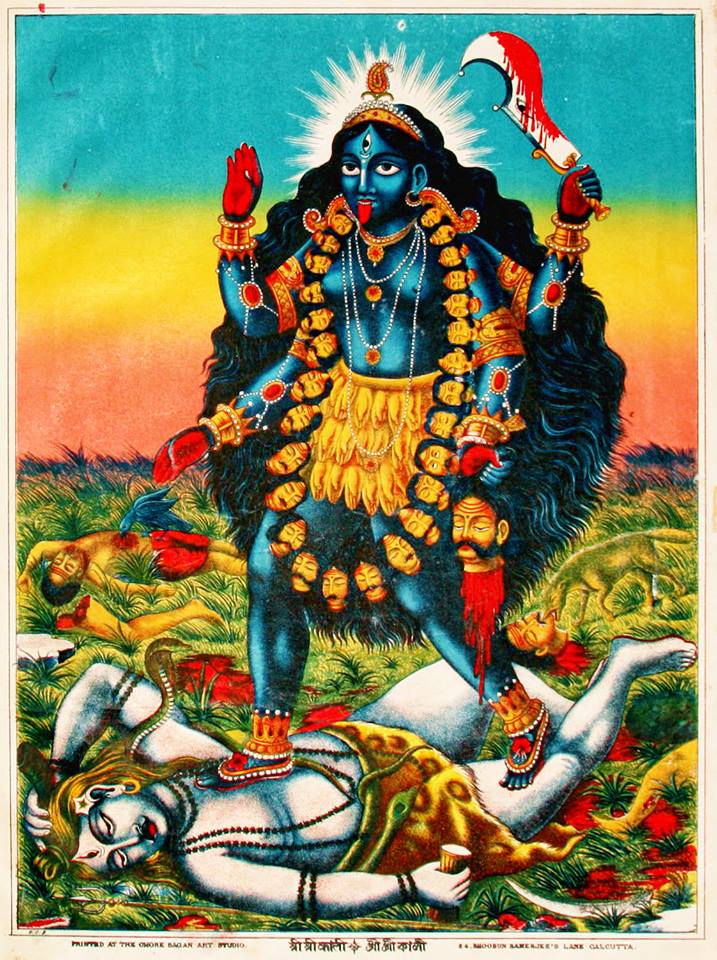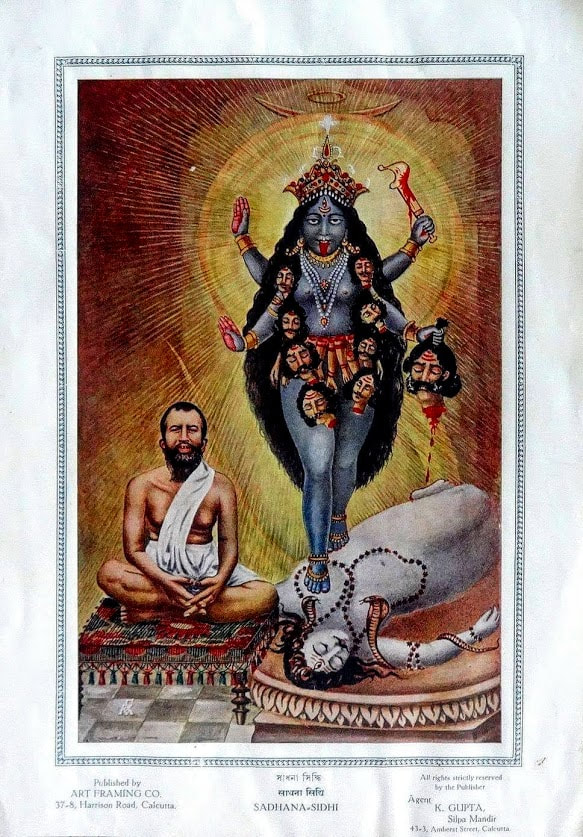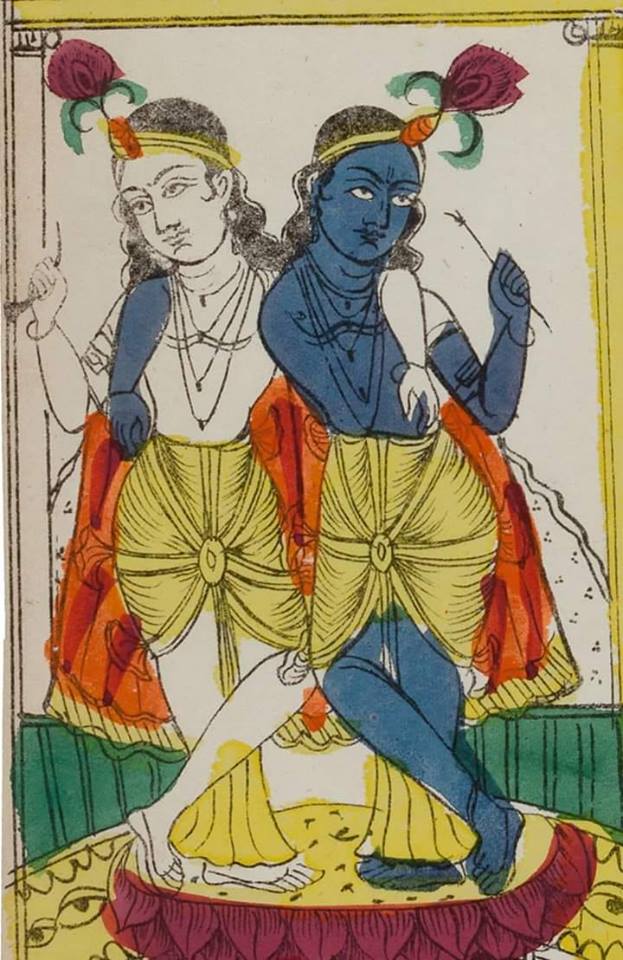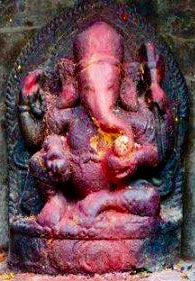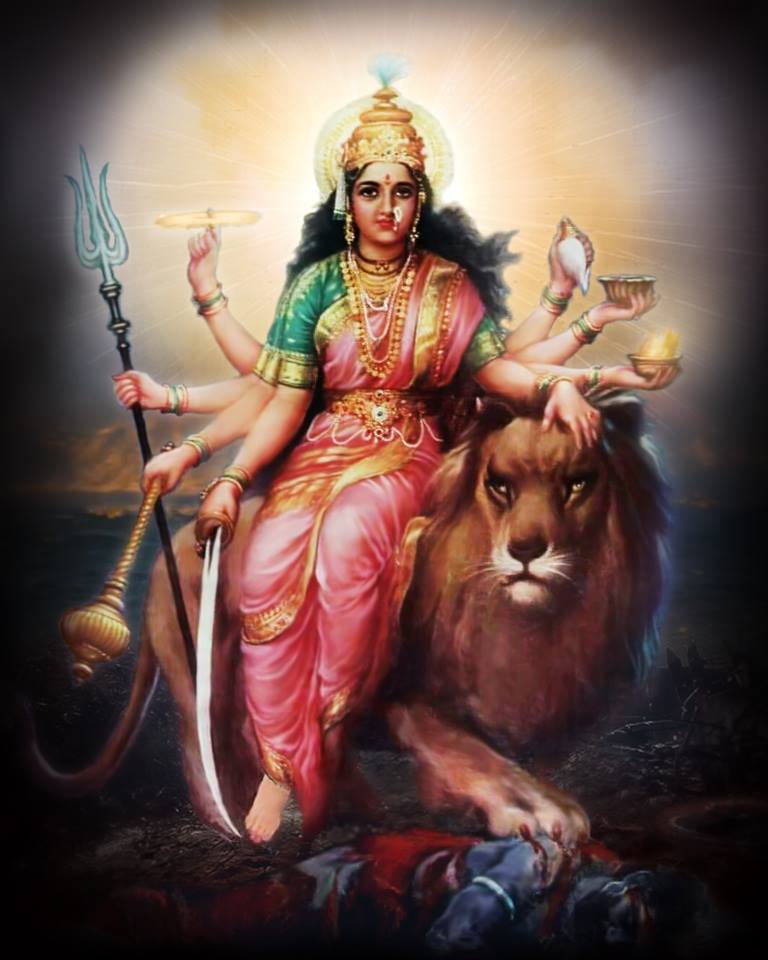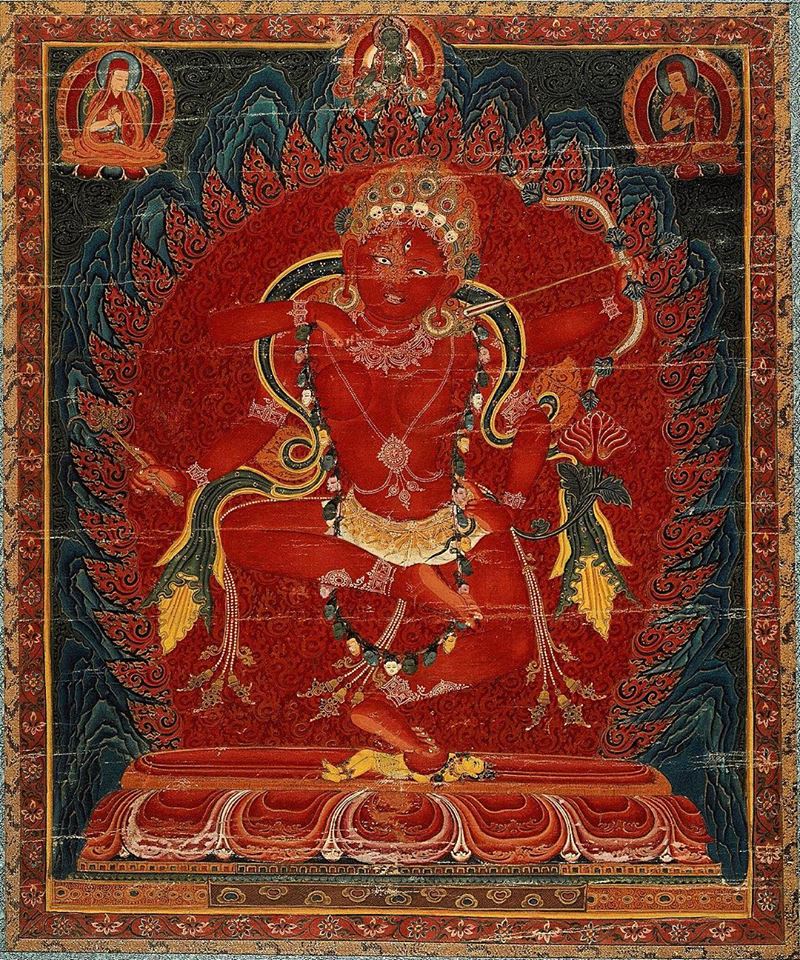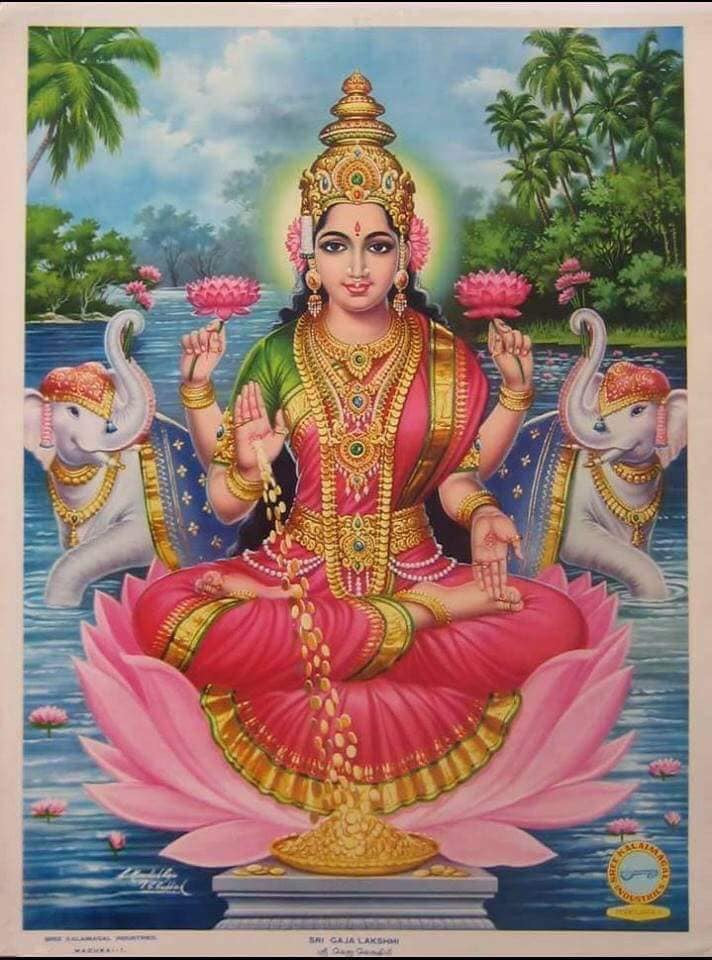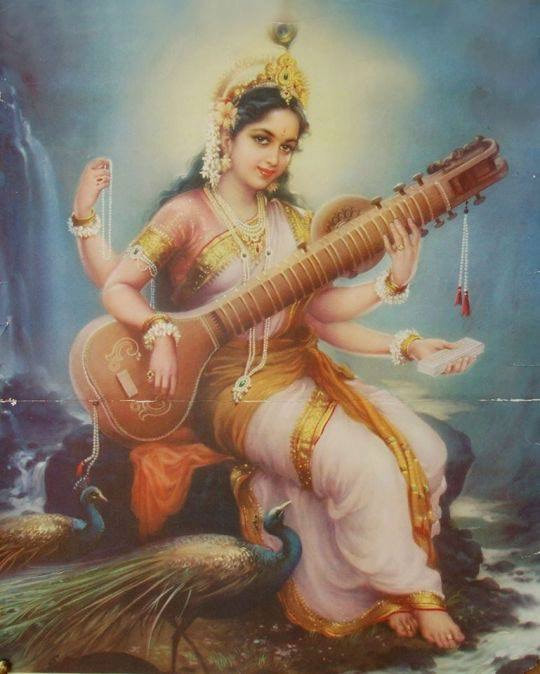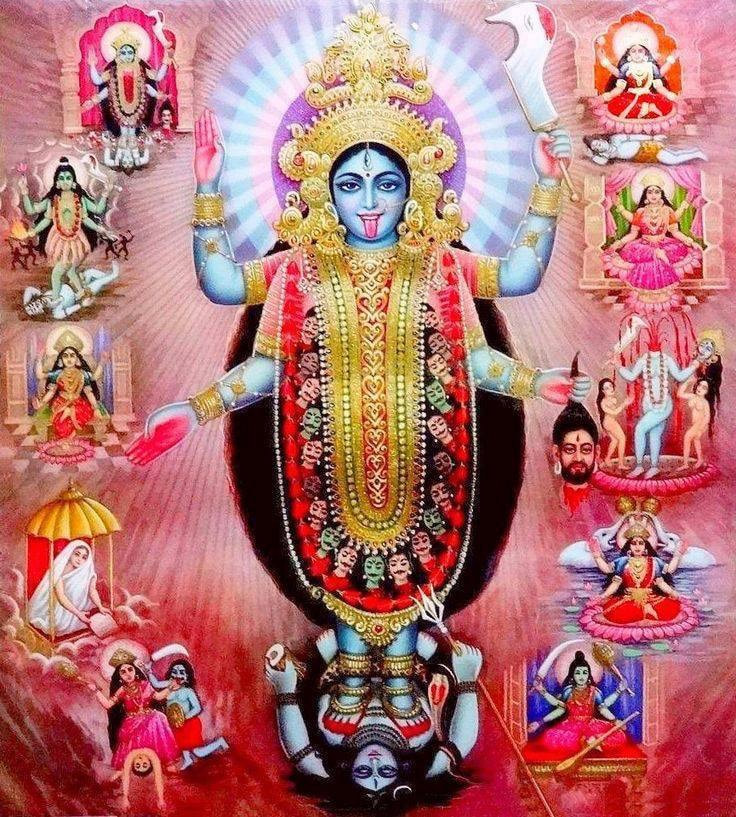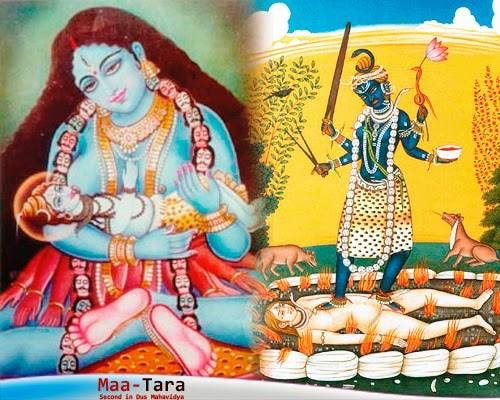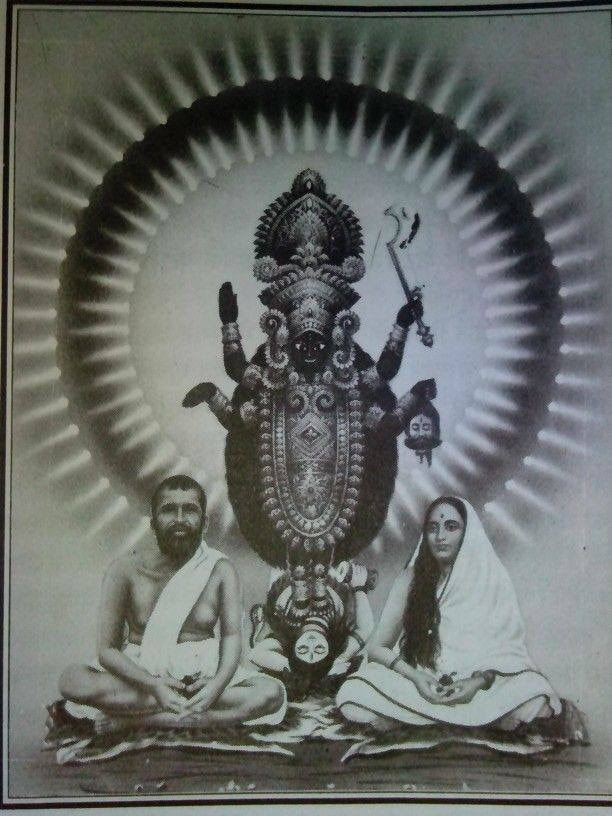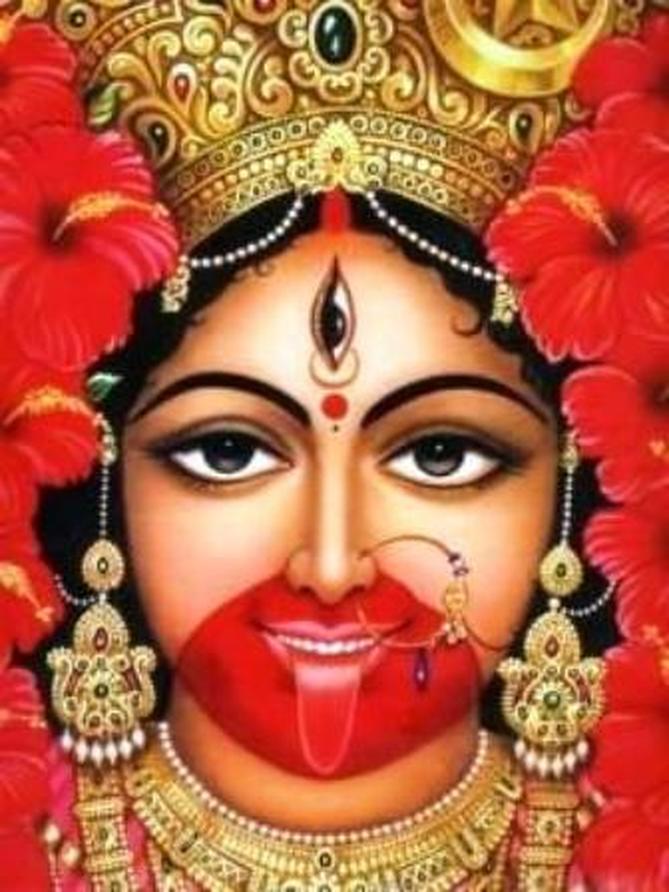
GODDESS TARA: Tara is the second of the Mahavidyas coming next to Goddess Kali. As Vidya, She is the Wisdom Goddess. Hindu Tara is associated with cremation. She is also known as Kalika, Ugra-kali, Mahakali and Bhadra-kali. ‘Tara’ means star that is perpetually beautiful. Tara closely resembles Kali in appearance and certain attributes displaying saumya – gentle and urga –fierce aspects. Indeed Goddess Kali and Tara were in prominence in the Tantric tradition both in Hinduism and Tibetian Buddhism even before Mahavidya emerged as a cult. Tara is as potent as Goddess Kali. She is also figured in Jainism. Thus in Hinduism, Jainism and Tibetian Buddhism, Tara, the Blue Goddess, is the Saviouress who helps us overcome our difficult situations and also helps us transcend them. Tara’s name comes from the root which means to carry. As ‘Samsara-tarini’ she aids to cross the tides of stormy sea of troubles and turmoils of life. She is the Tarini, the deliverer or savior, guiding bhaktas towards salvation. In summary Mother Tara is the deity of accomplishments.
She takes many other names too. As Smasana bhairavi, she is the terrible one of the cremation ground; Jalesvari, Mistress of the rain; Jagaddhatri, world nurse; Prthivi, earth; Vasudha, earth; Vrksmadhyani, she who dwells in trees; Sarvavamayi, she who creates everything; Samsaratarini, She who carries across the ocean of samsara.
It can be said that Goddess Tara does not figure prominently in the Hindu tradition. She seems to have a central and ancient place in Tibetian Buddhism. Her appearance in the list of Mahavidyas can probably be explained by the religious communication between Tibet and Bengal. The latter is where Mahavidya texts originated such as Mahabhagavata-purana and Brhaddharma-purana were written. In Bengal, Tara was an epithet of Kali. Tara was thus understood to be much a Hindu and Buddhist God.
SARASWATHI-TARA: Tara is the ‘sabda-shakti’ or power of Sound. She is sometimes equated to Goddess Saraswathi, the Goddess of Learning and associated with speaking prowess, perception and knowledge. Tara is thus referred to as Neela Saraswathi seated on a lotus. ‘Neela’ means blue. She also controls breath, manifesting in primodial sound of life. As Tarini, she is the carrier of knowledge conveyed through sound of speech. Tara is the un-manifest speech that resides in breath and consciousness. She is the feminine form of ‘Aum’. She is also in the Third Eye or Ajna chakra. Her location in the human body is the Manipura chakra or navel centre.
BUDDHISM: In contrast to the Buddhist Tara who is described as a benevolent, compassionate, gentle and spirited young woman, eager to help and to protect, Tara as Mahavidya is a rather fearsome goddess striking terror. She is also moody and harmful. But at times, Tara-Mahavidya can also be benevolent and compassionate.
According to Tibetan Buddhist tradition, Tara emanated from the tear of Avalokiteshvara. Once Avalokiteshvara liberated all beings from the lower realms and an instant later saw that the lower realms were again filled with suffering beings. Saddened, a tear fell from his eye and from it sprang Green Tara. Both Avalok-iteshvara and Tara embody the principle of compassion, one of the three main aspects of enlightened mind: compassion, wisdom and power. Kwan Yin is generally explained as a Chinese feminine equivalent of Avalokiteshvara, who manifested to help all those suffering on earth. Thus Tara is understood to be essence of Compassion. She is seen in Tibetian Buddhism as a compassionate savior who rescues devotees from peril. Both Amitabha and Avalokistesvara are renowned for their great compassion and Tara fits into this family.
Like Durga, Tara is often said to rescue her bhaktas from desperate predicaments. Folk stories and legends show her typically appearing at the requests of her devotees to rescue them from jaws of sufferings. Tara is approached as one who protects, preserves and saves life. But Tibetian legends affirm that Tara is Tibetian connected to Tibetian royal line; a historical or legendary queen and mother.
BRIHAD NILA TANTRA: As the second of the Mahavidyas, Tara, while known to the West through her Tibetian manifestations, occupies an important position in the Hindu Tantrik pantheon. In Brihad Nila Tantra of the Kaula tradition she is Nila Sarasvati - the Sapphire Blue Sarasvati. She is the Brahma-Shakti, or spouse of the Supreme Deity in his Creative aspect. While attempts are made to separate the Hindu from the Tibetan Tara, one cannot doubt that she is the same Shakti. In Hindu Tantrarajatantra, where Her mantra is given as ‘Om Tare Tuttare Ture Svaha’ is identical to the Tibetan version. Here Tara takes her form as Kurukulla and the reference is to the same Devi.
Mention has to be made of Matrika Shakti. The Brihad Nila Tantra and Devirahasya mentions other forms such as Nilasarasvati, Aniruddha Sarasvati, Ugra Tara, Tarini. Nila Sarasvati and the Tibetian White Saraswathi give the same fruits of worshipping Her. It also points to the Goddess being Shakti of the Letters of the Alphabet, the Matrika Shakti. As Matrika Shakti She deludes the entire human race with Her Maya of letters, and words. This has been expressed in a Tantrik form. Her mantra is described as a Siddha-Vidya. She has an important role in Tantrik cosmology because mantra, words, music are considered to be the very source of the cosmos.
KALI – TARA: Between Kali and Tara there are some similarities as also some differences. As said earlier, Tara’s physical appearance resembles that of Kali. Like Kali, she has three bright red eyes; has four hands holding sword or head chopper, a scissors, a severed head and a lotus; wears the garland of skulls; is richly is bejeweled and has snakes for ornaments; dances on a corpse. Both Kali and Tara are strongly associated with death and dissolution; both stand upon inert male figure. And, both are associated with Shiva. Brahaddharma purana mentions Tara as representing time, just as does Kali. Whereas Kali is the power of time -kala that inexorably causes all created things to perish, Tara is associated with fire, and particularly the fires of the cremation ground.
There are also differences in the depiction of the two goddesses. Tara's complexion is blue whereas Kali's can be black or deep blue. Tara holds a bowl made from a scull in one hand, a pair of scissors in another, a blue lotus in the third hand and an axe in the fourth. The scissors and sword in the hands of Tara are tools to remove the ego, the sense of mistaken identity that defines, limits, and binds. They are not weapons of death and destruction. Tara is draped in tiger skin around her waist; and is not naked unlike Kali who symbolizes absolute freedom. Unlike Kali, whose hair flows loose and wild, Tara’s hair of tawny color is carefully bunched into a topknot or jata. Whereas Kali’s hair represents absolute freedom from constraint, Tara’s is a symbol of yogic asceticism and restraint. Kali represents the highest form of wisdom or liberating knowledge; and Tara is related to the discipline of yogic practices.
MYTHOLOGY: The mythological origin of Tara is in Amrit Manthan. Both Devas and Asuras participated in the churning exercise and both wanted it. However, Amrit is not the only thing that came out of the water. Many invaluable gems and stones and medicines were also yielded by the ocean. Likewise the ocean also yielded poison. The poison was so strong that if it fell on the ground then all Life would be wiped out. Fearing such devastation the Asuras and Devas approached Lord Shiva for help. He promised that He would drink the poison and save the world from destruction.
As the Lord drank the poison He was filled with pain and his throat blue and earning him the epithet Nilakantha. His entire body was burning from inside. When the pain became unbearable, Tara appeared and took Shiva on her lap. She suckled him. The milk from her breasts counteracted the poison. The Lord recovered. This story forms a prominent depiction of Hindu Tara. The other story where the Lord is in an infant status is when Ma Kali was on a rampage. Siva becomes an infant and Kali's maternal instinct comes to the fore. She silences herself to nurses the infant Shiva.
TARAPITH: Pursuant to Dakshan’s yagna and Sati entering agni, Lord Vishnu had to step in to stop Siva from destroying the world. He uses the Sudarshan Chakra to cut Sati’s body into 52 pieces. With the body gone, Lord Siva regained His composure and the world was saved. Some part are said to have fallen in the ocean and some on land. These had become holy places. Tara is one of Shakti’s incarnations; it is believed that She is the third eye of Mother Shakti. Tarapith is where Tara is worshipped. However, it is sometimes debated if Tarapith is indeed a Shaktipith.
Notwithstanding, Tarapith is a highly important Tantric site for Bengali Shaktas. Blood sacrifice is a daily occurance here. It is covered abundantly by Garlands of flowers. Tara image here is unique. Made of silver metal, Tara is depicted with Her lower half of the face covered in blood. She has four arms wearing a garland of skulls and a protruding tongue. Her image is wrapped in a red sari decked in marigold garlands with a silver umbrella above her head. Her feet are in front of Her image in a severed fashion as if they had been cut off. There is exposure if a leg bone. Apparently the murti is in fact a composite one which covers the actual ‘self-formed’ Deity; one said to be worshipped for 5,000 years by the Pujaris at the temple. In former times known as Chandipur. It is vague in its depiction of a mother suckling a child implying Tara breast feeding the infant Siva. Not many get to see this deity as getting access to the sanctum sanctorum is no easy feat.
Tarapith is also famous for Bama Khepa, said to be the ‘mad saint’ who worshipped in the temple and resided in the cremation grounds practicing and perfecting yoga and tantric art under the guidance of another famous master called Kailashpathi Baba. Bama-khepa means the left handed path of Tantric worship. It is said that Tara gave her vision and breast fed Bama Khepa.
SMASHAN TARA: Cremation grounds are seen to be polluting, most; thus Indian smashans are located far from the center of town. However both the Tarapith mandir and smashan are within the vicinity of the town centre. It is common belief that Goddess Tara’s footprints are preserved in the smashan. The smashan contains within it permanent huts and residences amidst banyan trees for sadhus and tantrikas. Dogs are a common sight. Trishuls decorated with marigold garland and skulls are placed in the entrance.
At the midnight hour, the aghori sits alone in the smashan. To his this is undeniably a sacred site. He is naked or digambra, fearless and unashamed. He performs his rituals and chants his mantra. He gazes in wonder at the resplendent form of his beloved goddess, Shaman Tara – Tara of the Cremation Grounds. Maa, in her deep blue colour, three eyes and four arms is said to arise amidst the blazing heat of the funeral pyre standing upon fire consumed skeleton of a male corpse like a warrior. Her right foot presses upon the breast which is the place of desire and Maa’s left foot pressing upon the skeleton’s legs, the place of worldly ambitions. The roaring funeral pyre is the fire at the end of time – kalagni, the ultimate conflagration of the universe. Her body is formed of pure light; she is unrestrained, wild, terrifying and fearless. Her beautiful midnight blue complexion represents her immutable and indestructible nature.
She is the colour of space. She is vast and measureless like the night sky beyond the concepts or qualitie – nirguna. Her breasts are large pot shaped – ghatastani, symbolizing spiritual nourishment to her bhaktas. Lambodari – her stomach is full and rounded, symbolizing her hunger for the corpses of selflessness. She is as naked and sky-clad – digambra symbolizing her freedom from the veils of emotional defilements. The girdle of eight blood dripping forearms symbolize her severance of all action and karmas and eight worldly dharmas of loss and gain, praise and blame, pleasure and pain, ignominy and fame. Her long hair is disheveled and hangs freely to symbolize her untied appearances and revel her unconditional freedom. If you seek, Maa Tara is is there.
Om Namah Ugra Tara Devayee Namah.
Yogi Ananda Saraswati
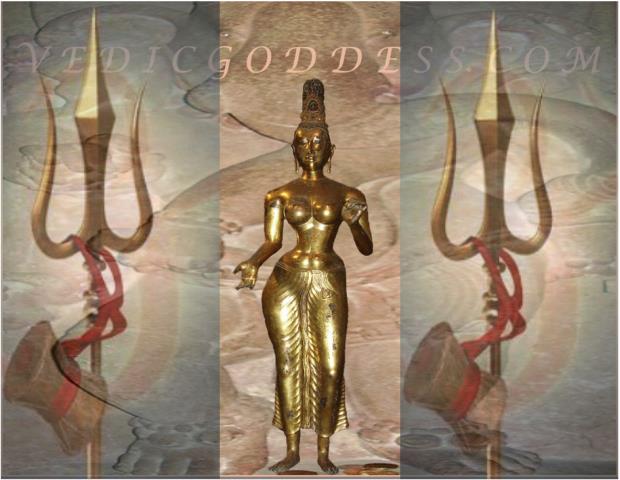
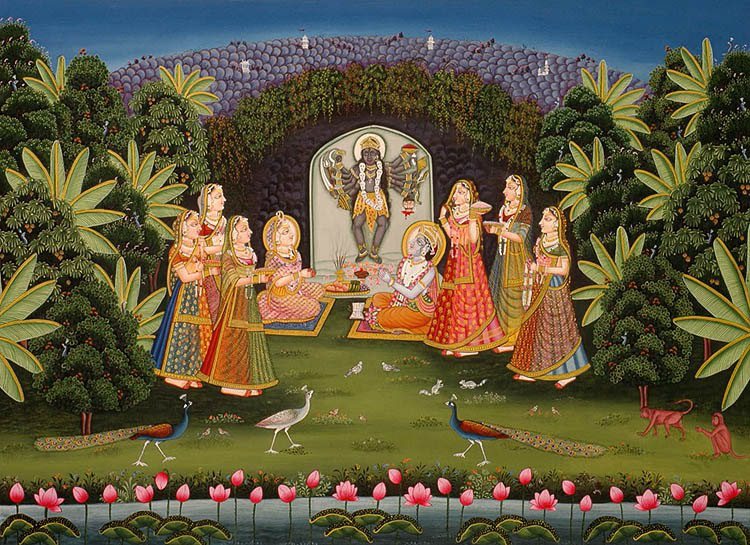
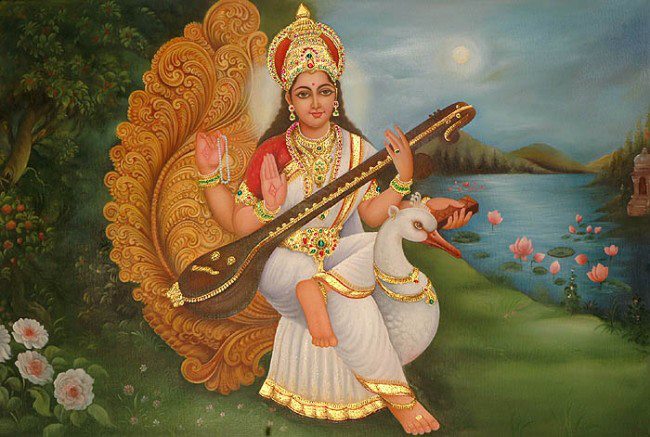
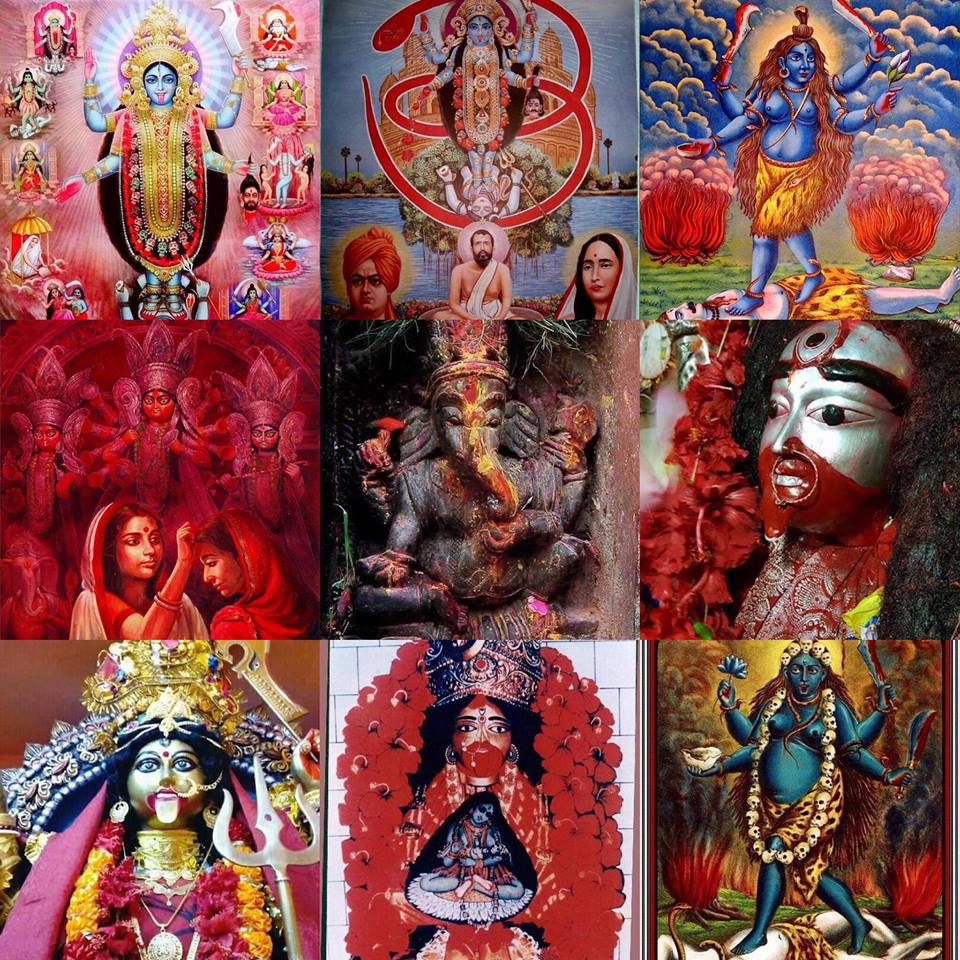
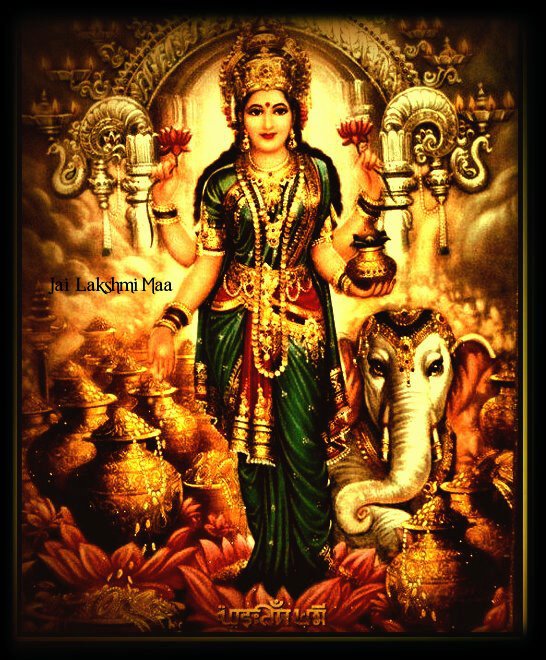
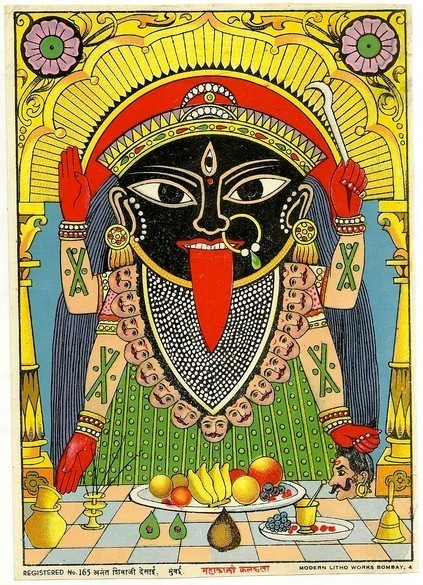
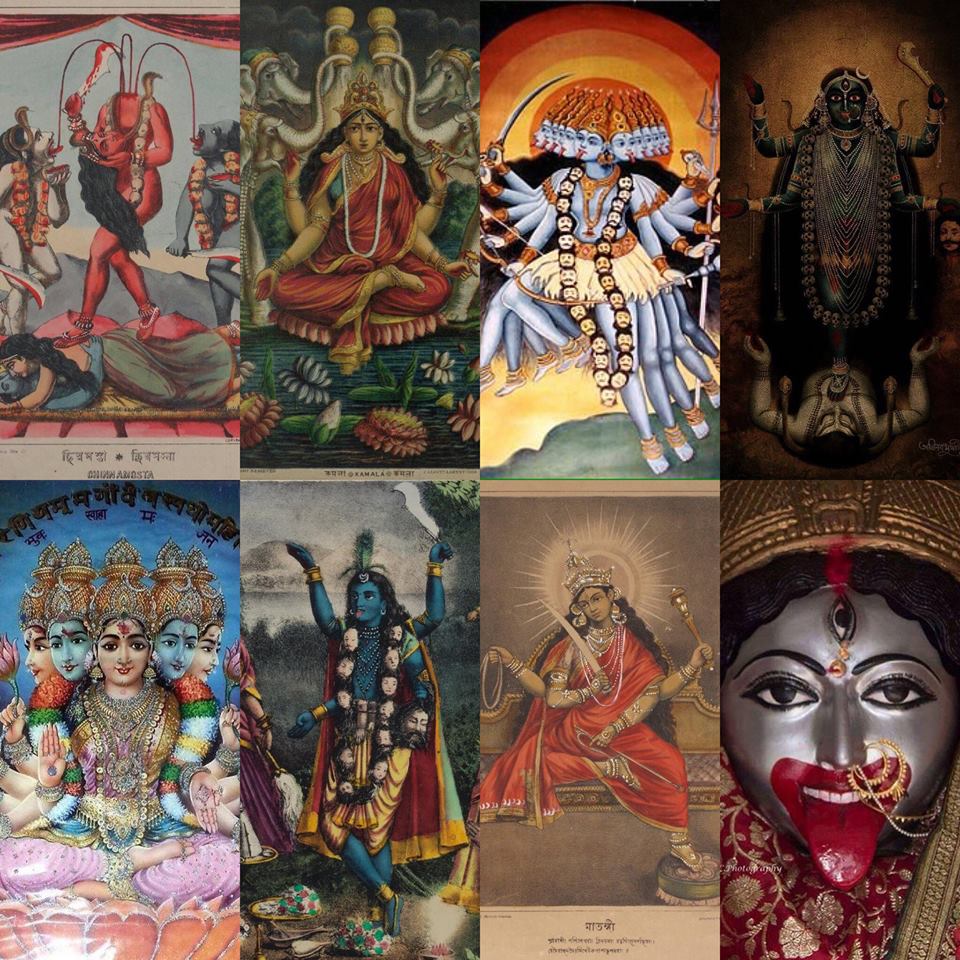
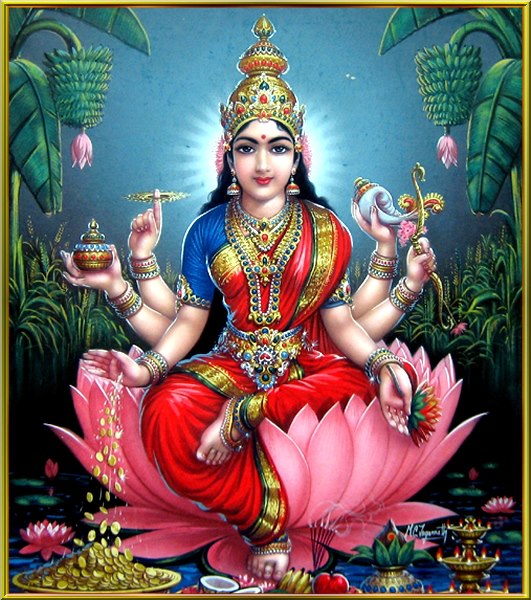
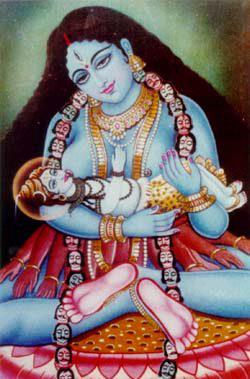
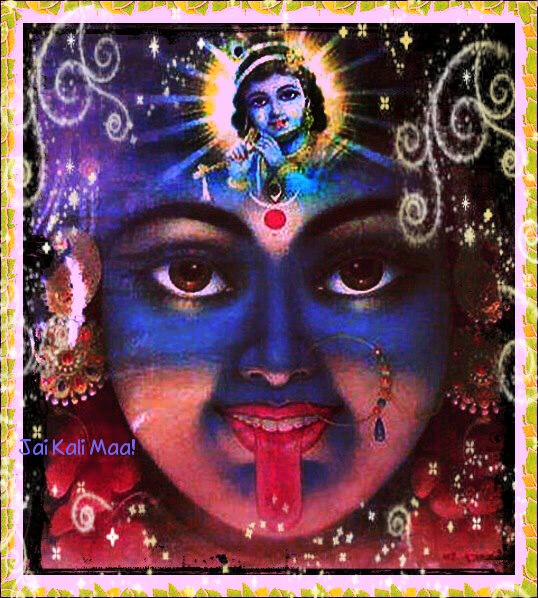
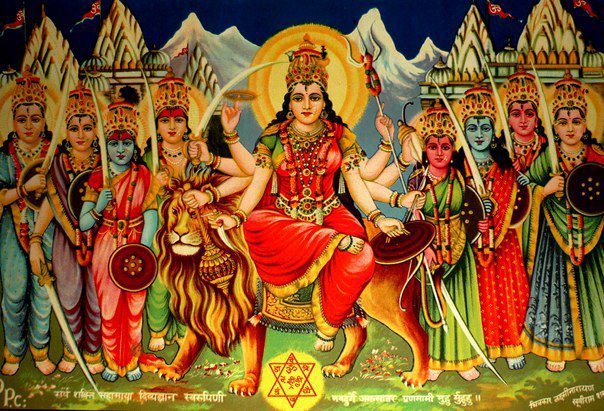
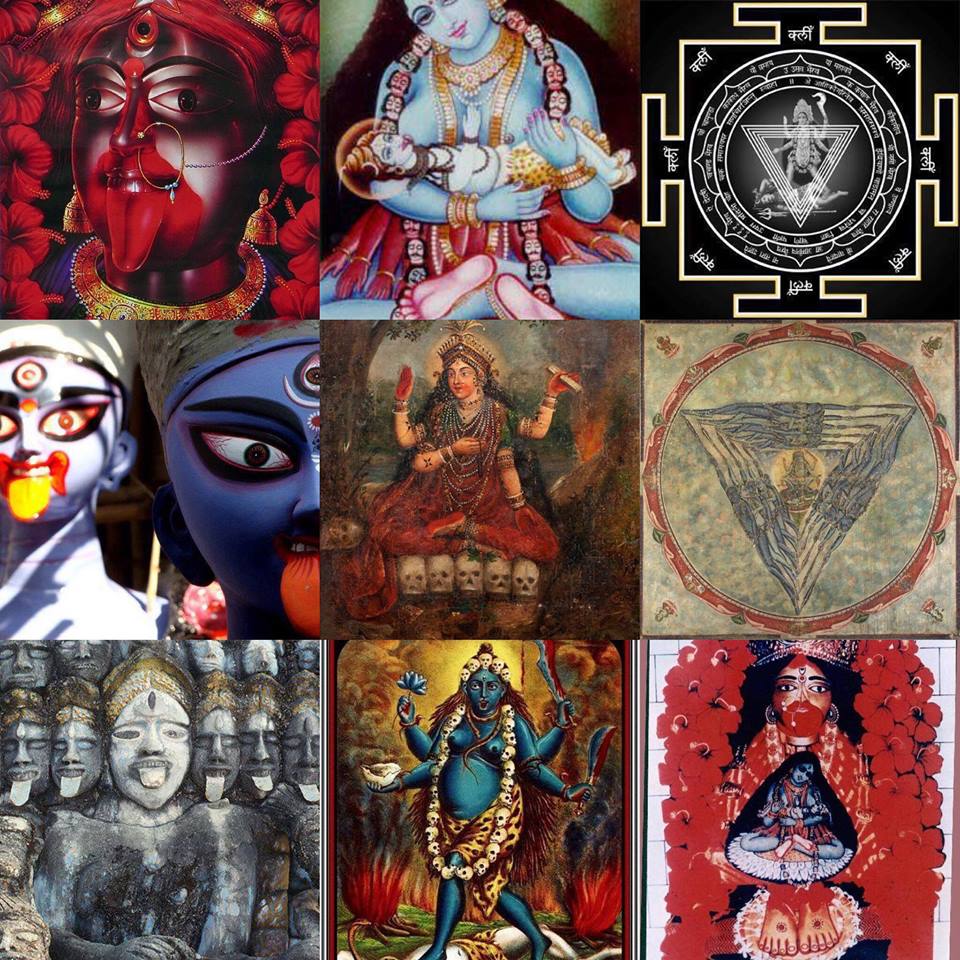
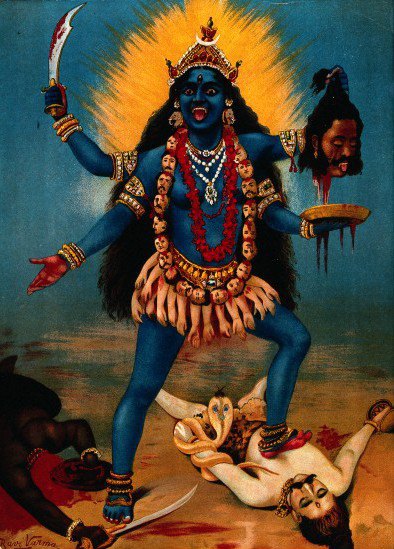
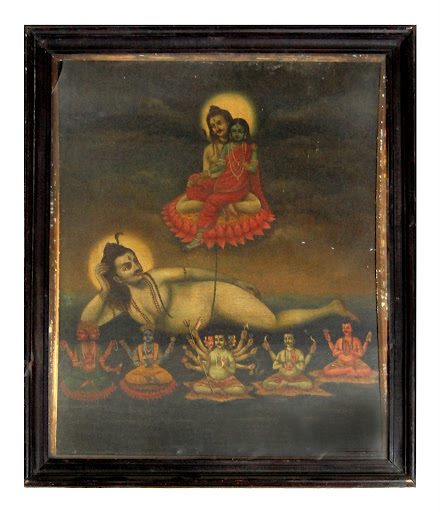
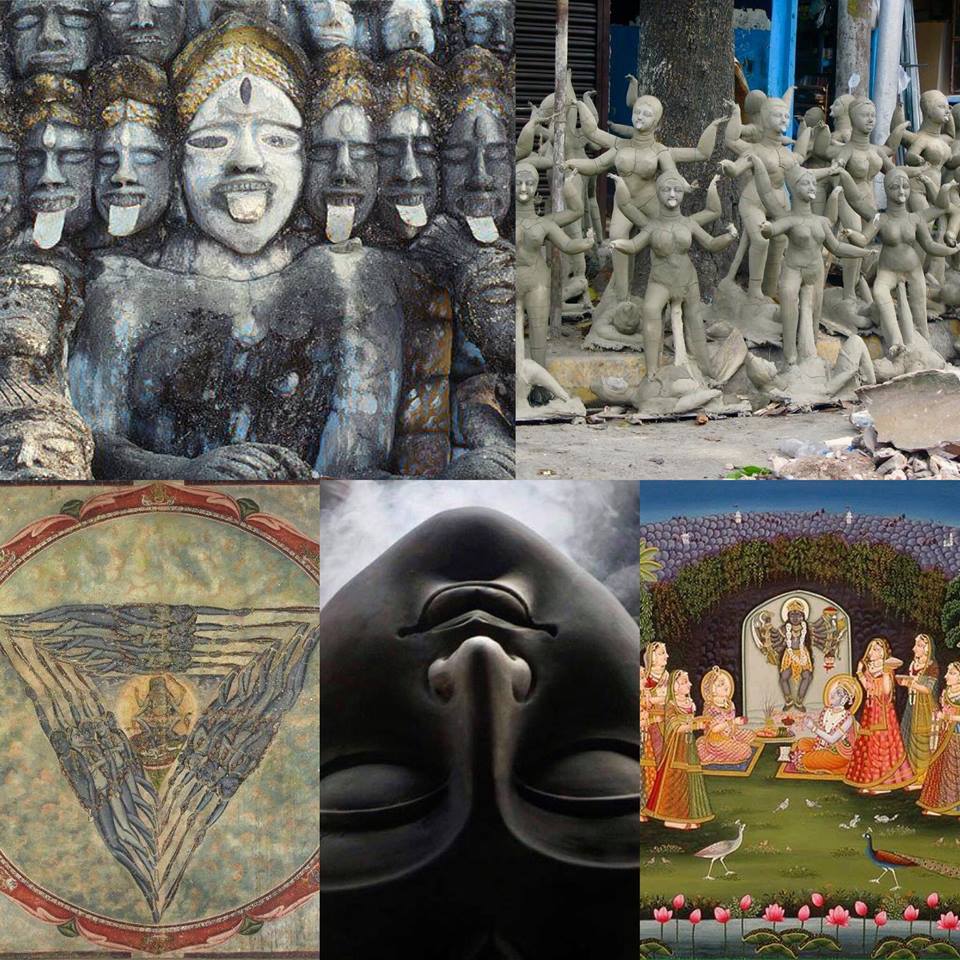
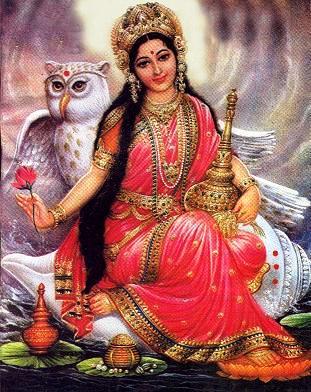
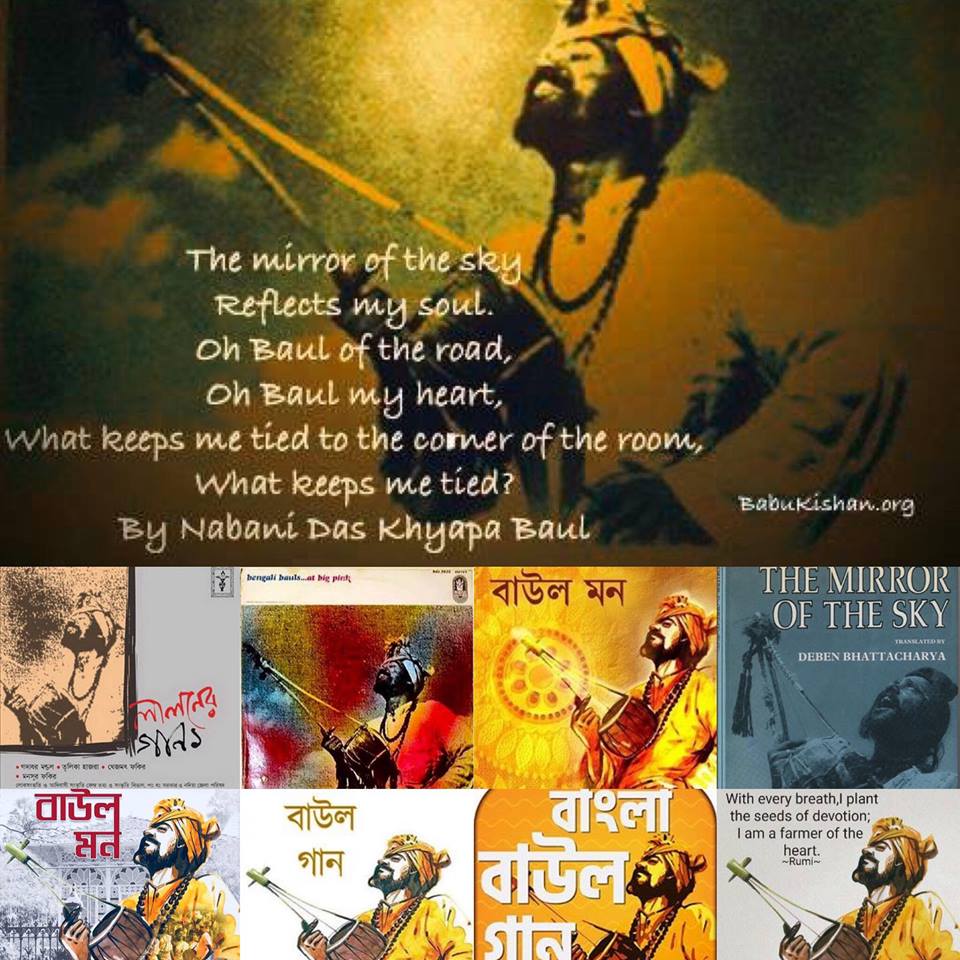
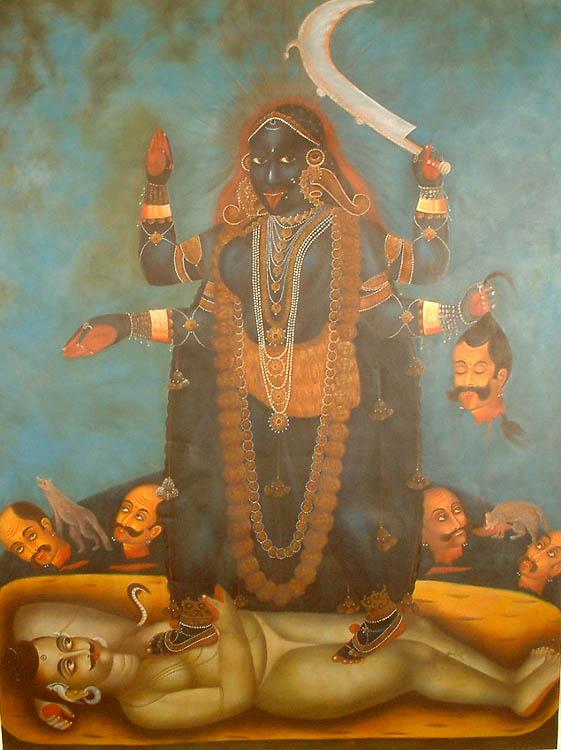
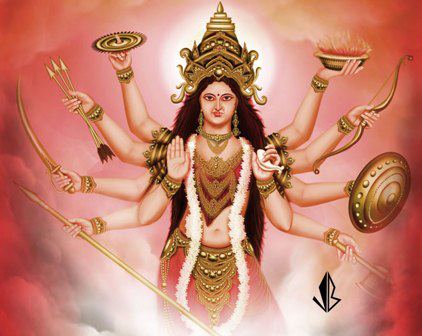
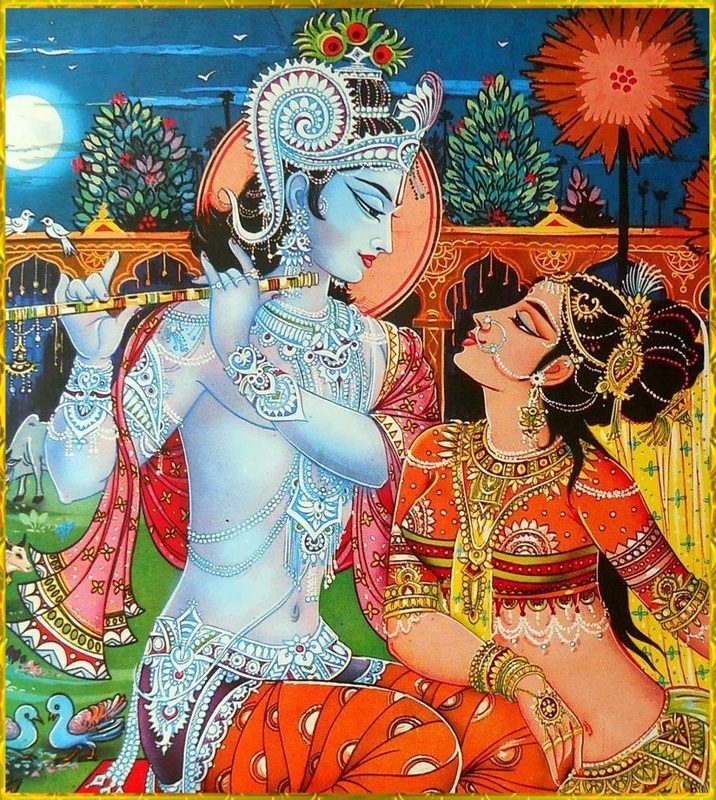
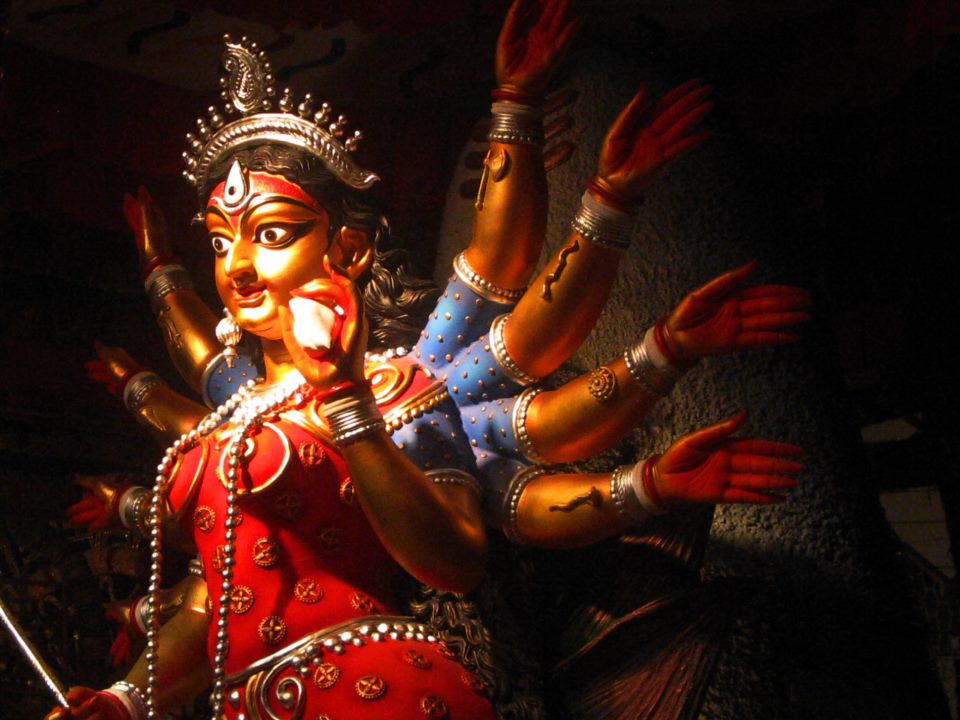

 RSS Feed
RSS Feed
